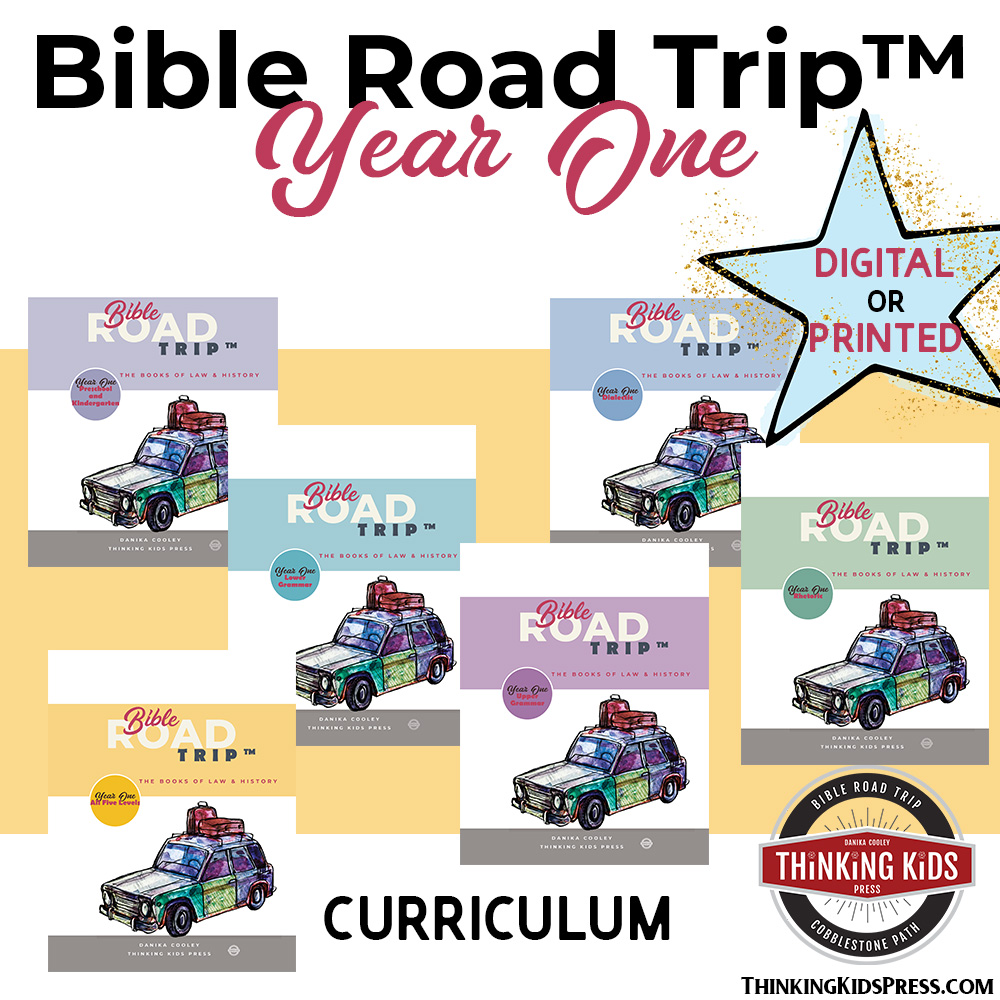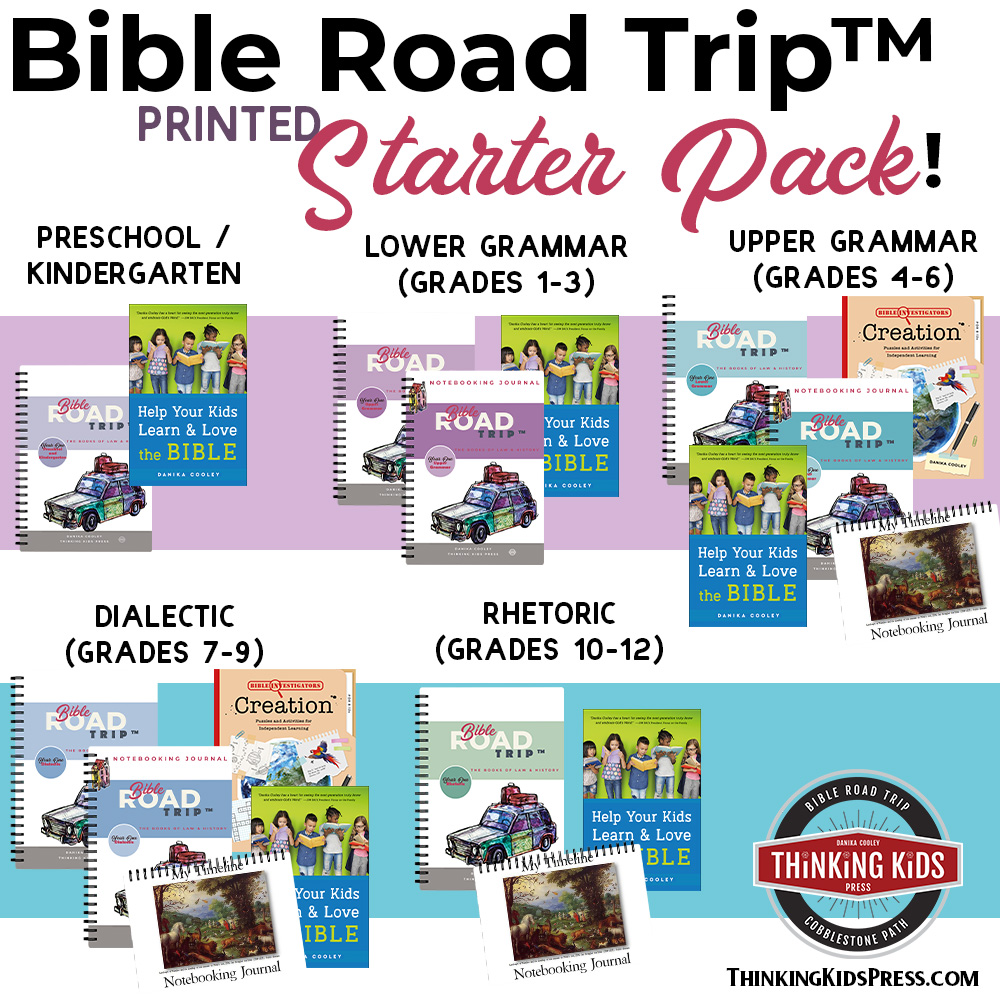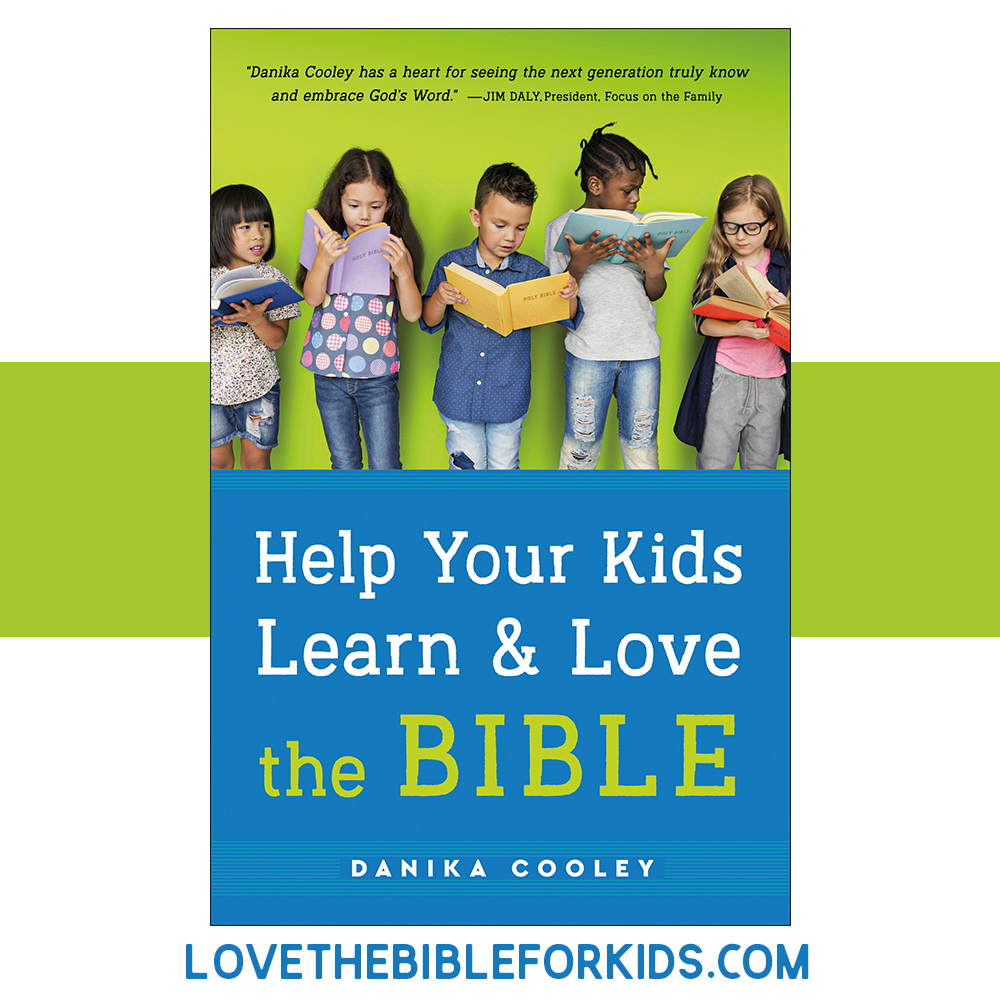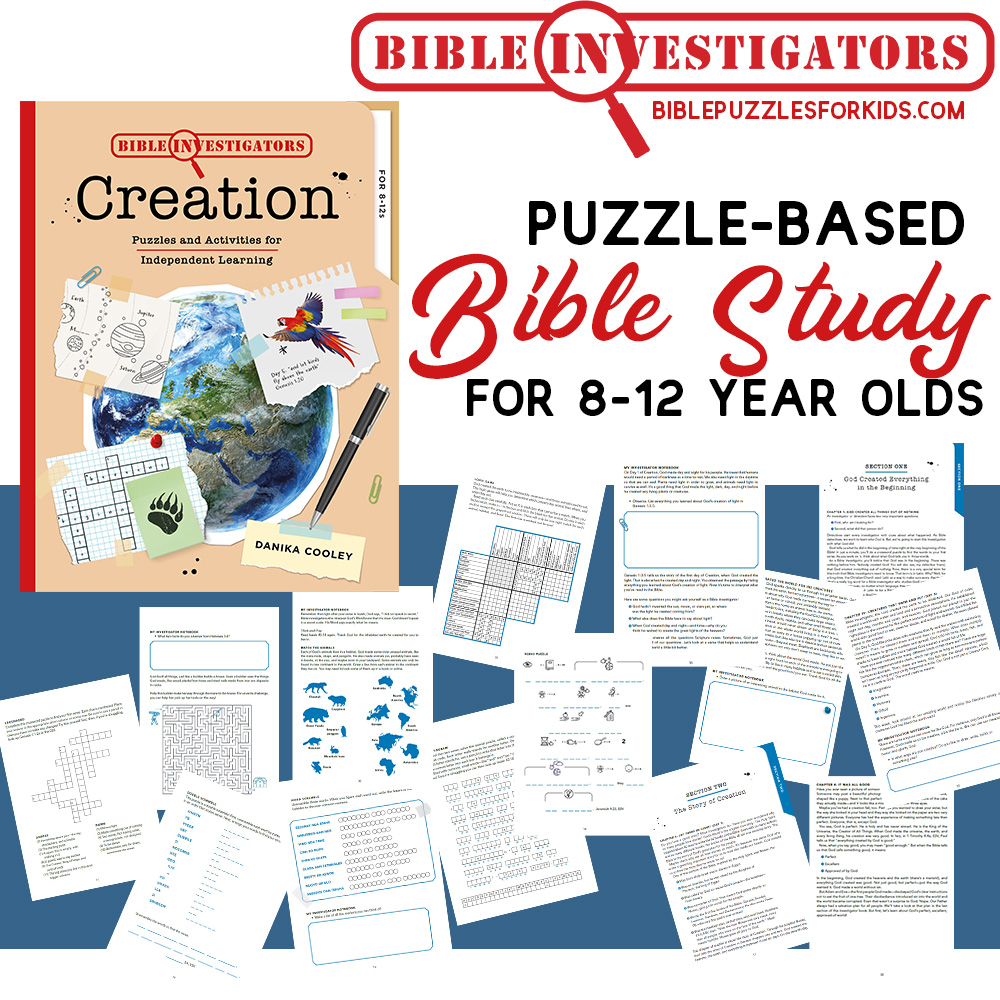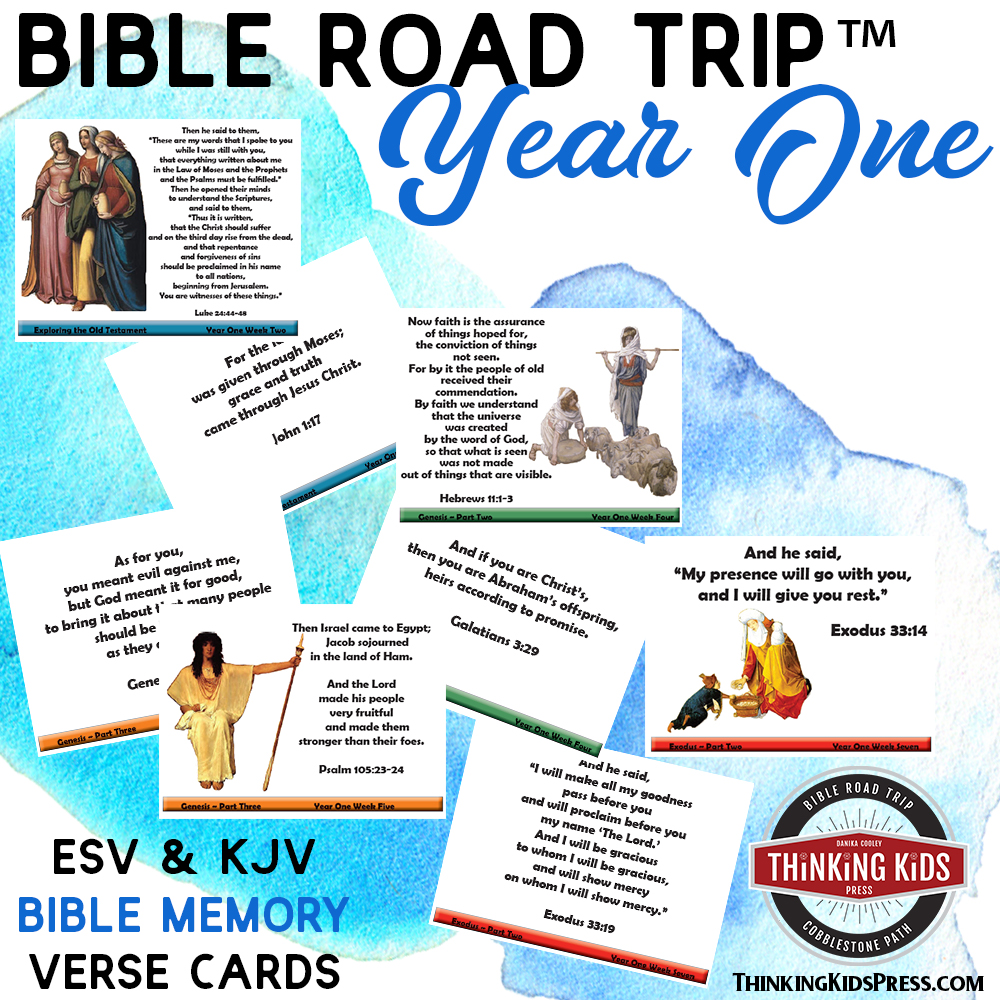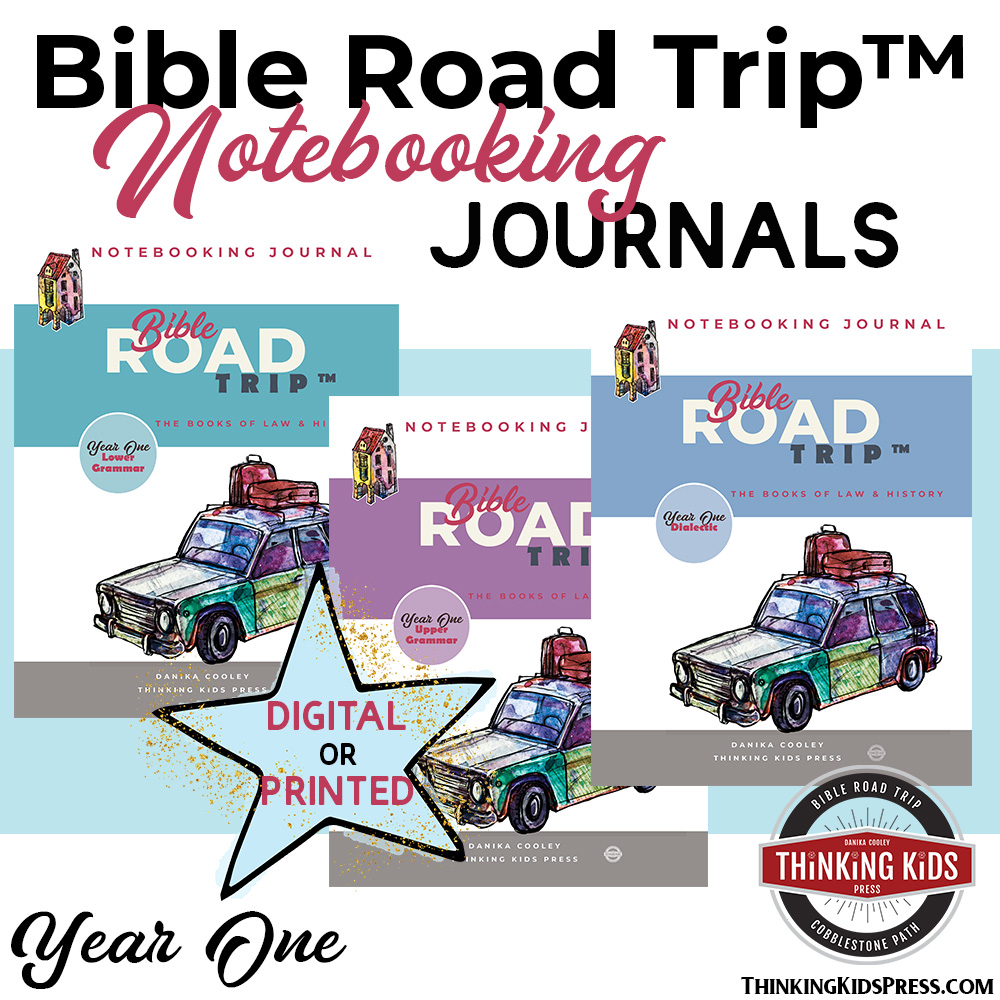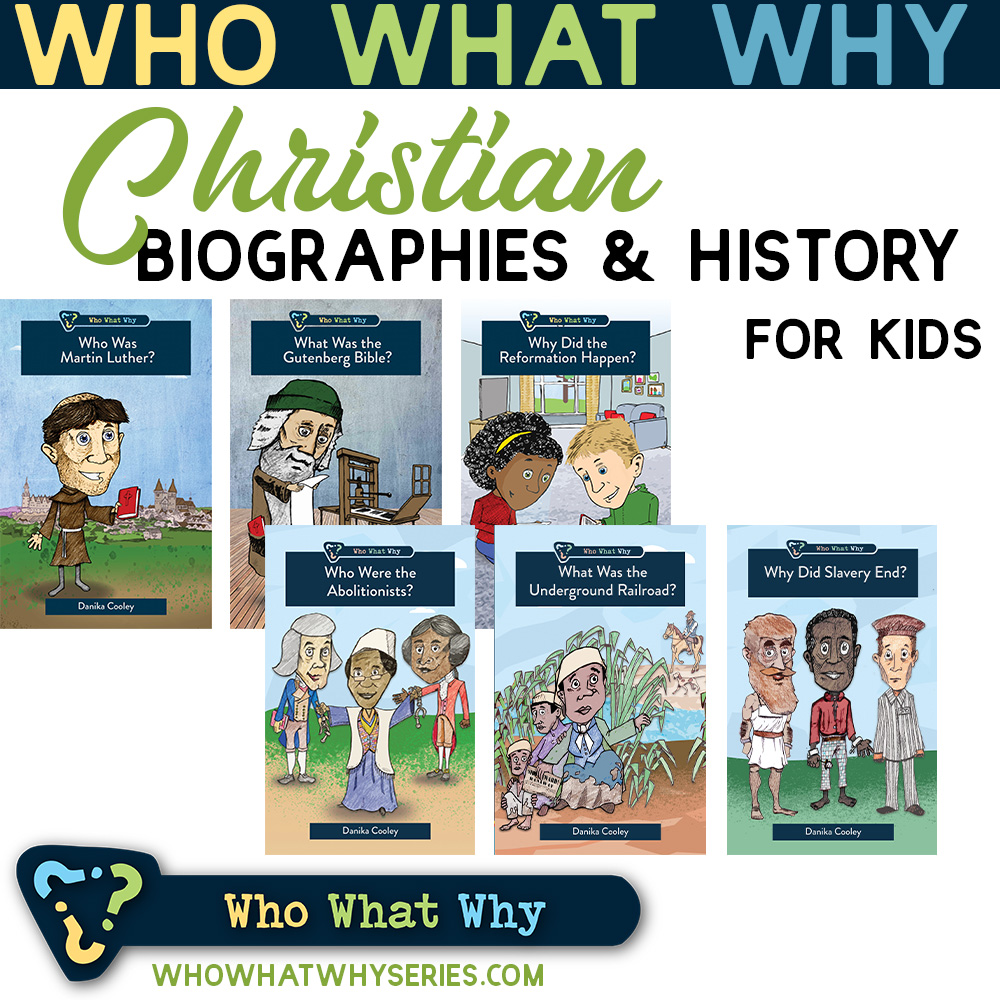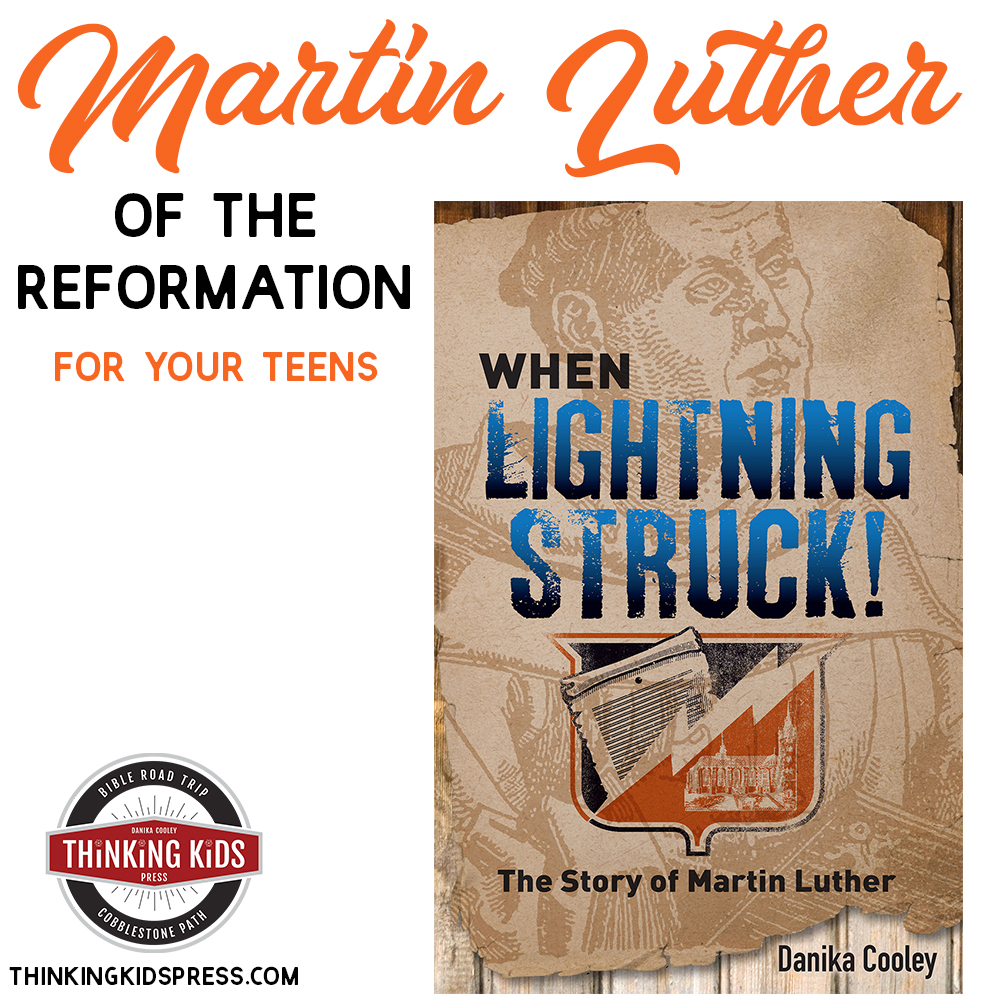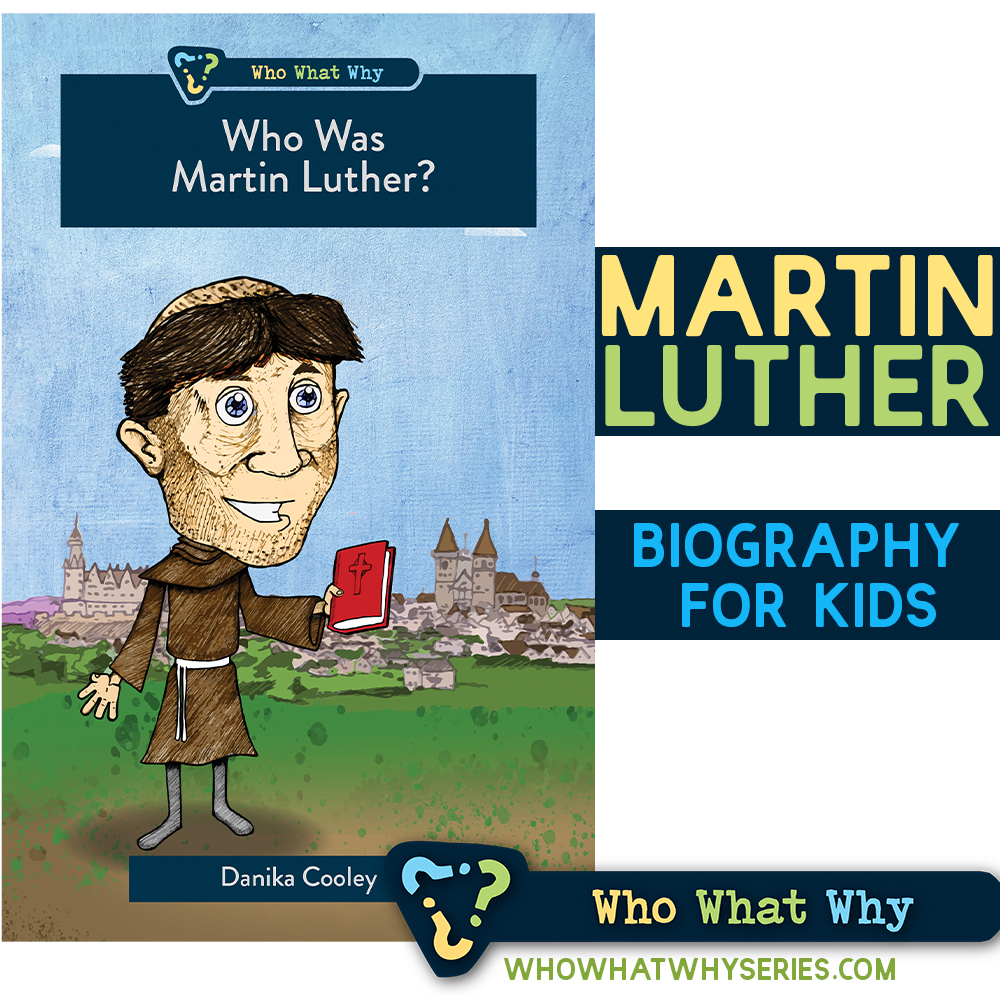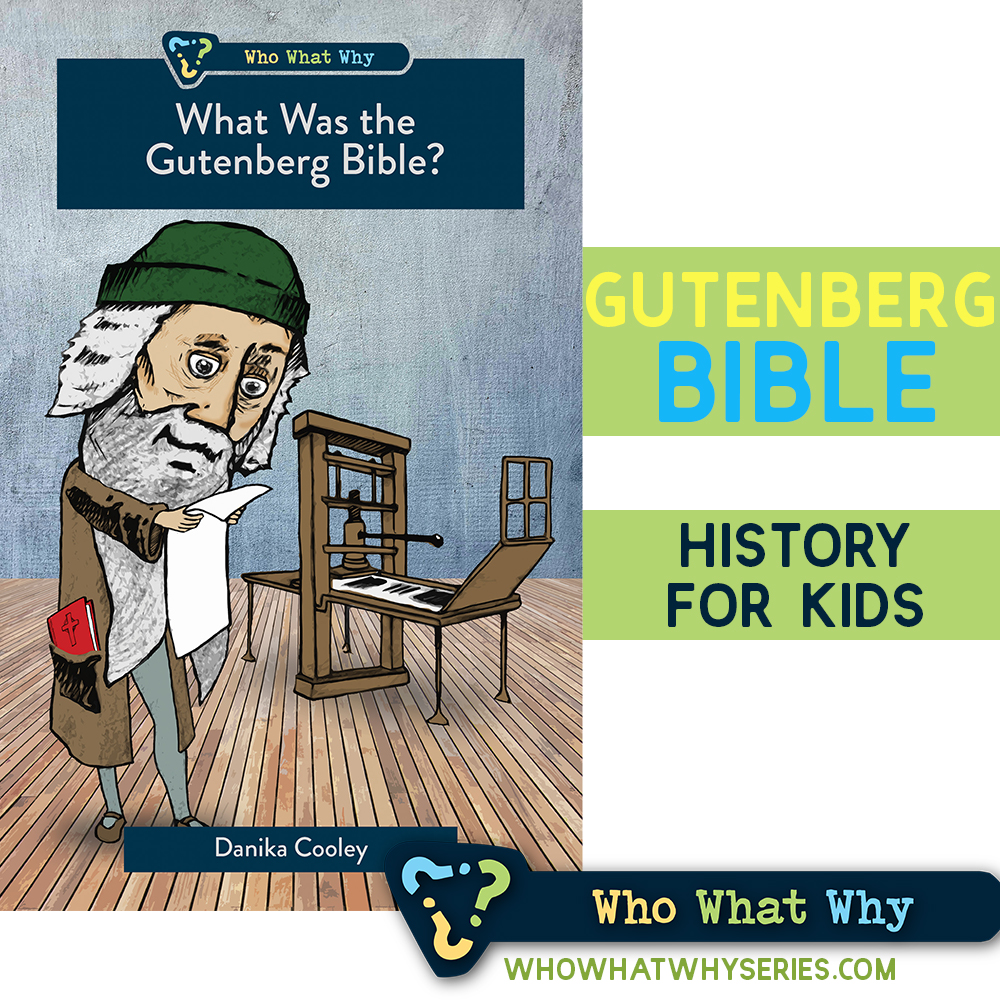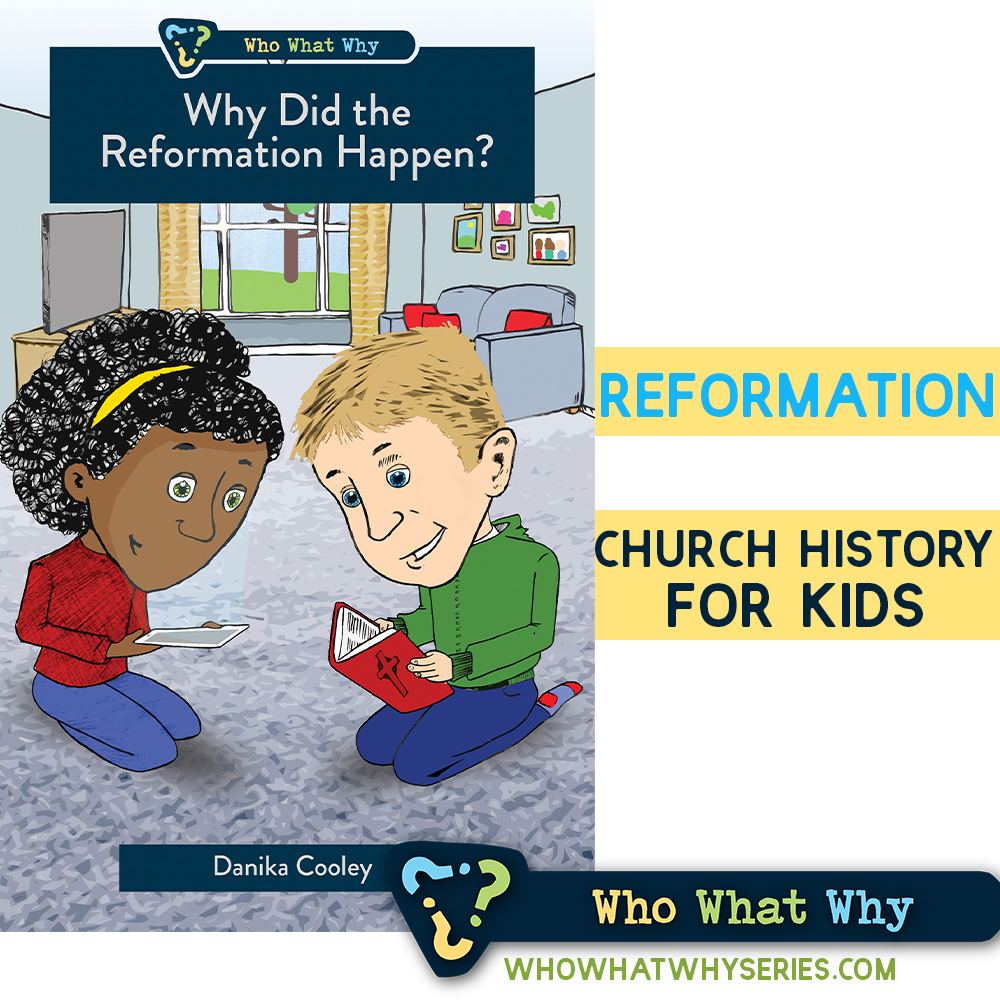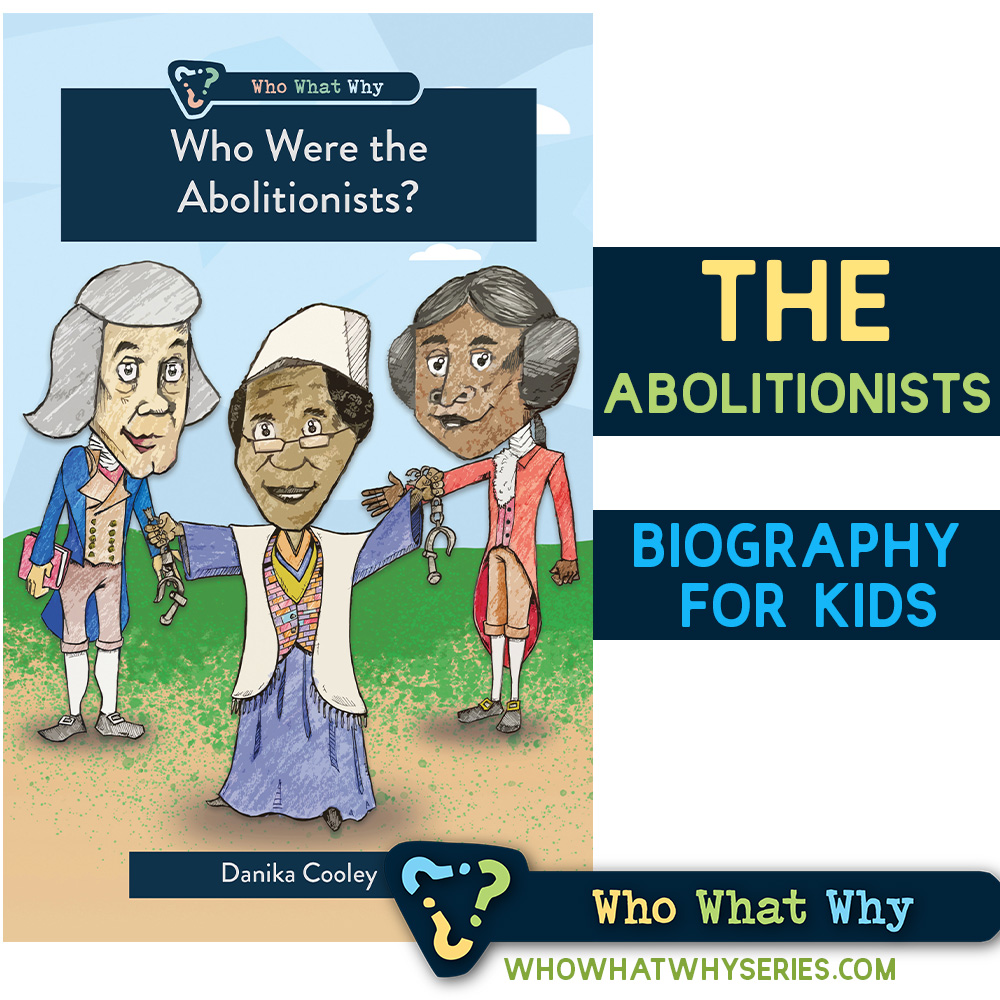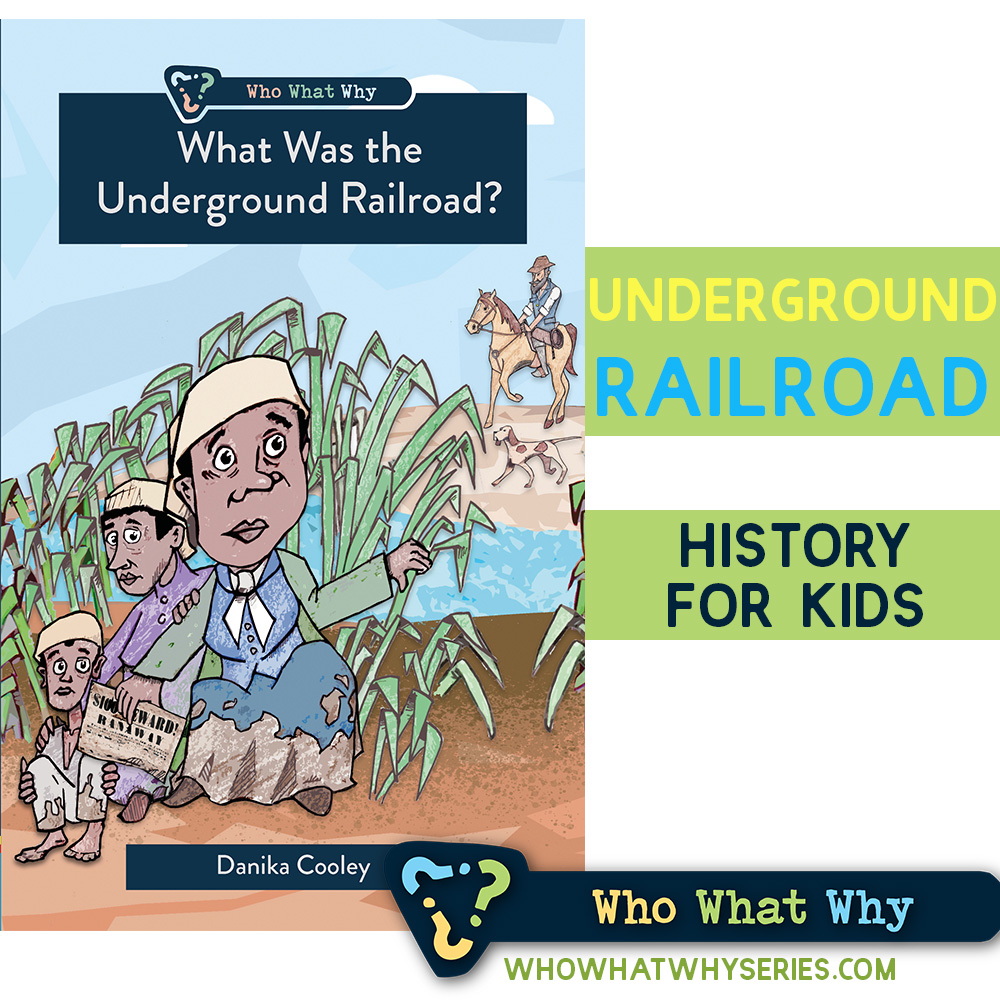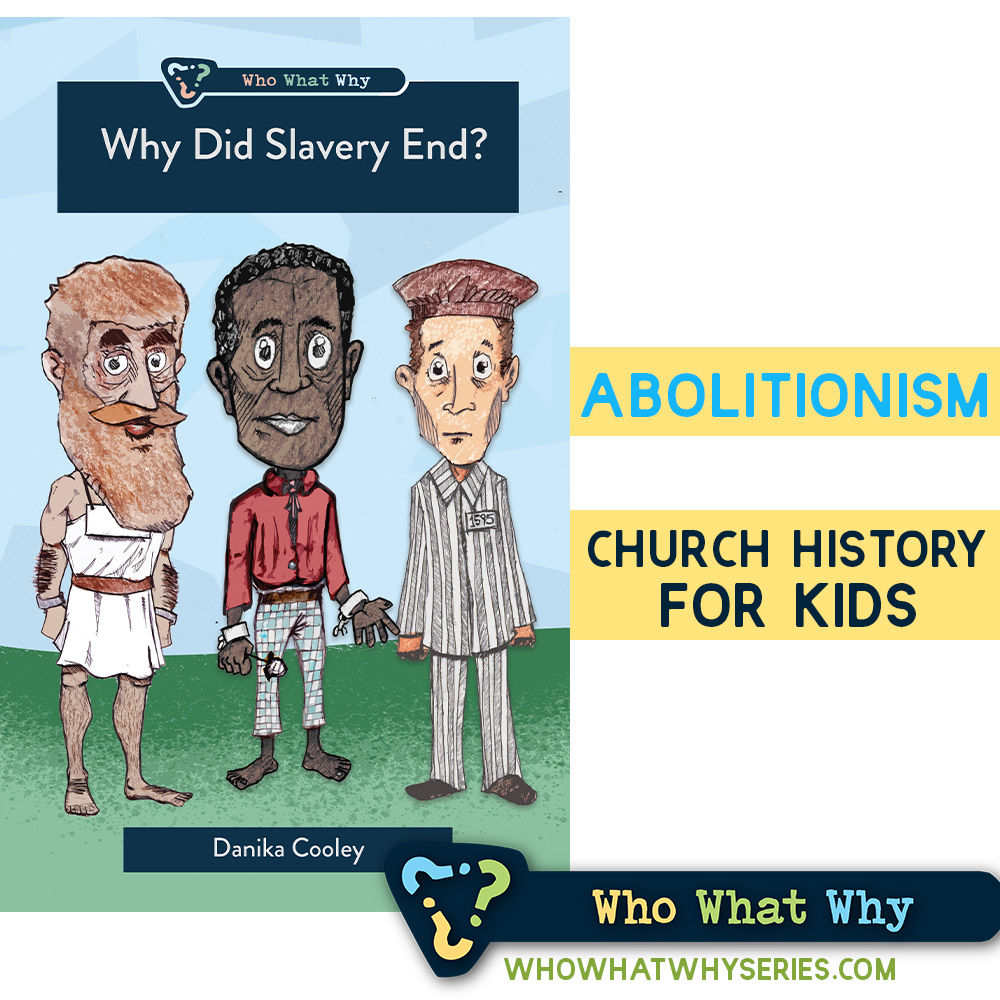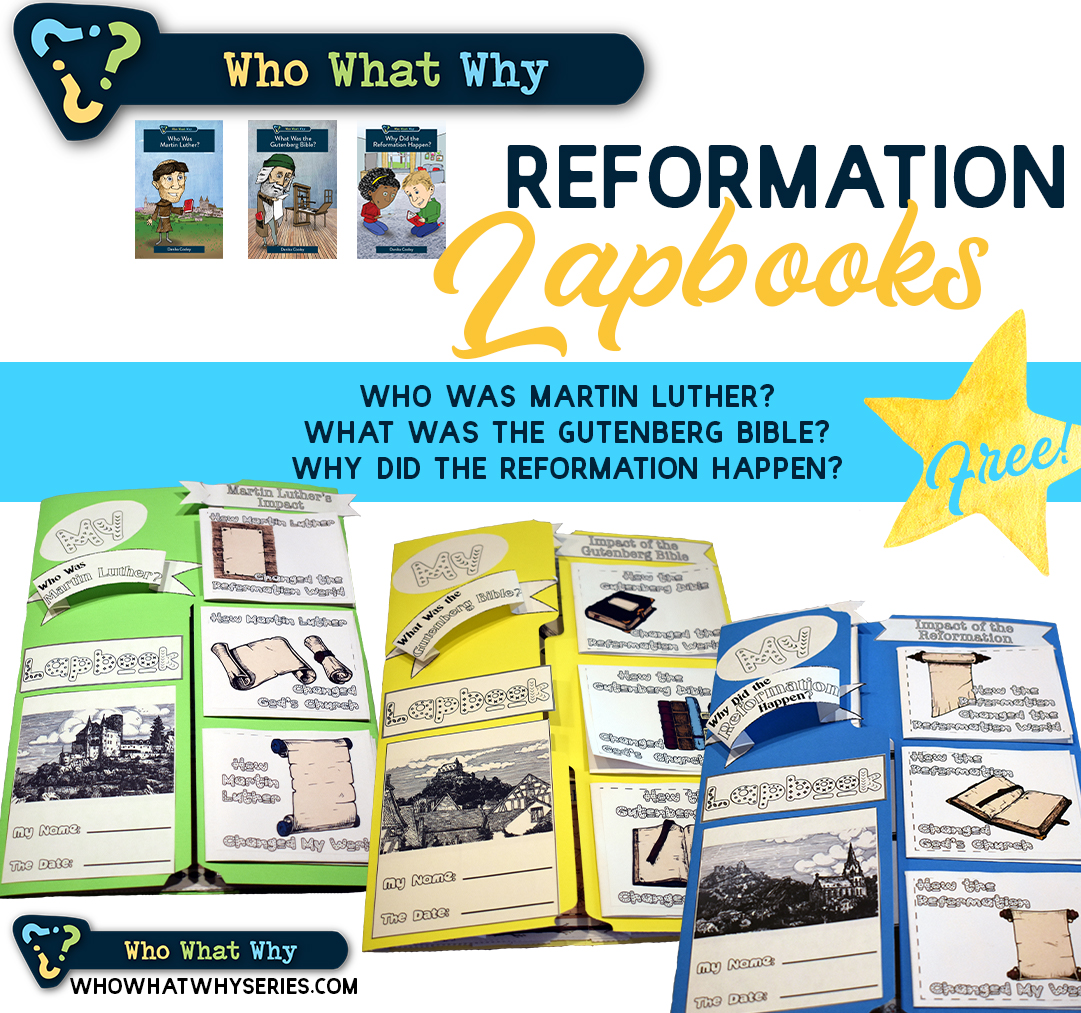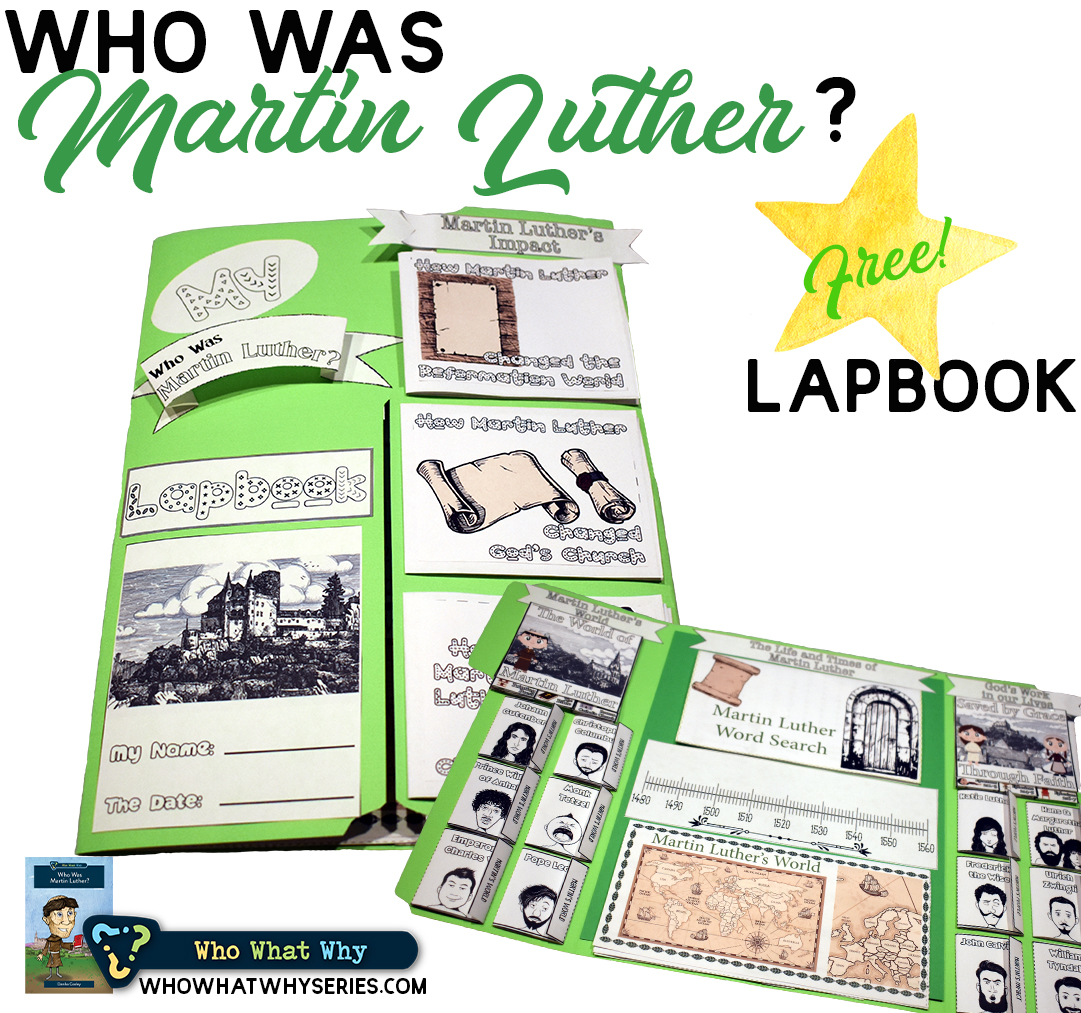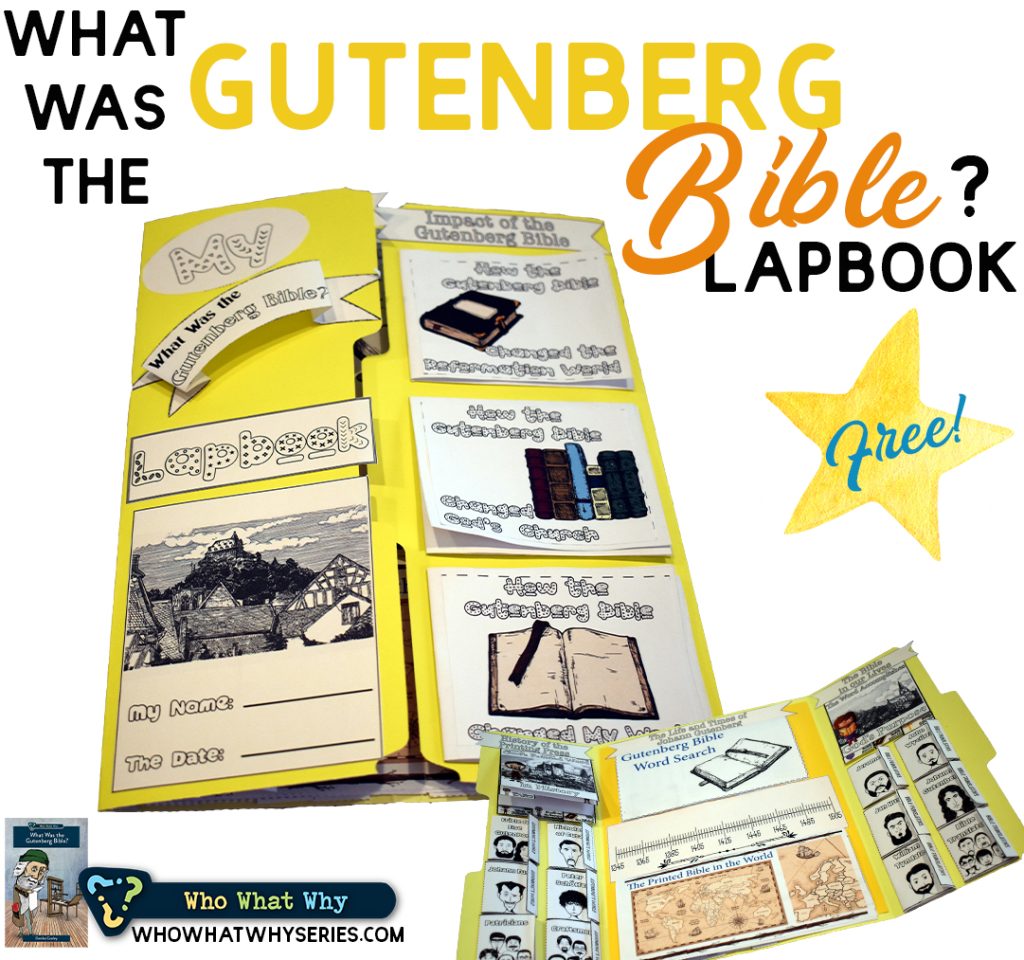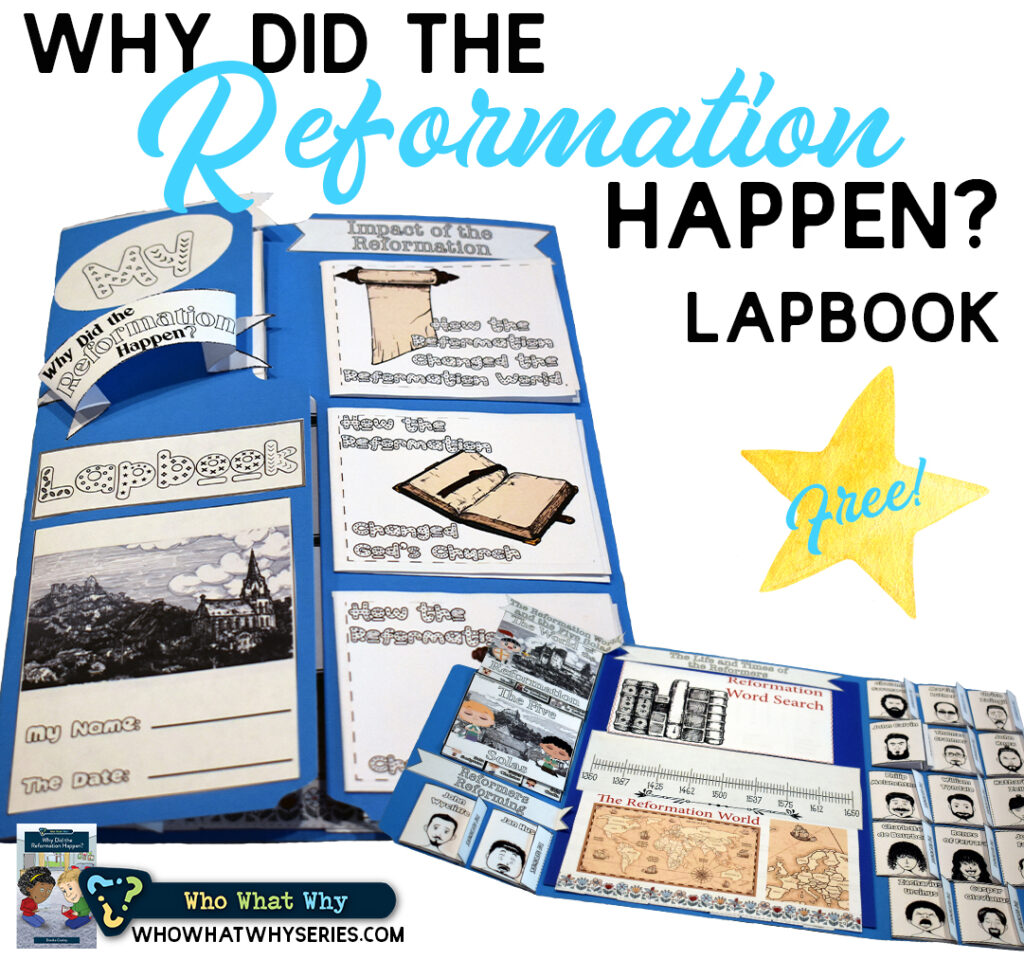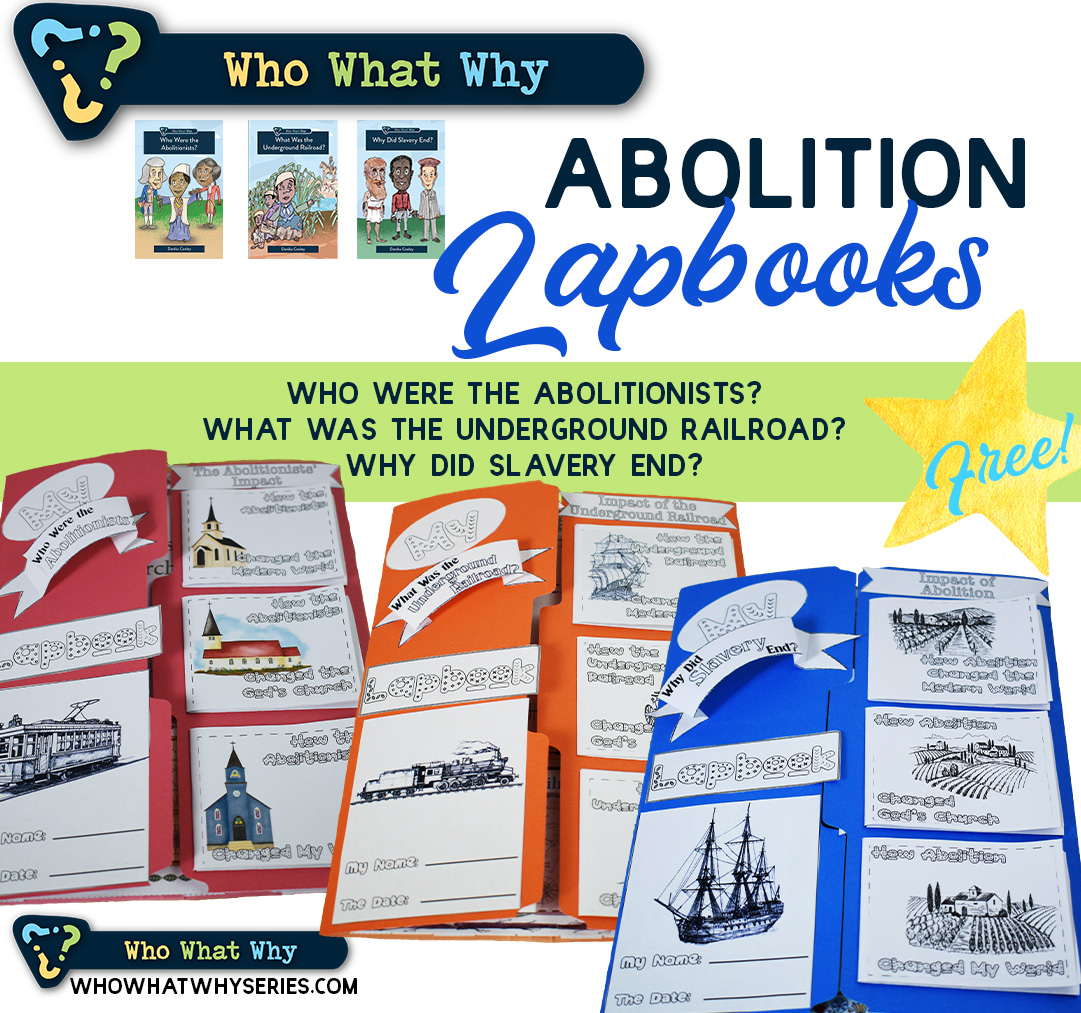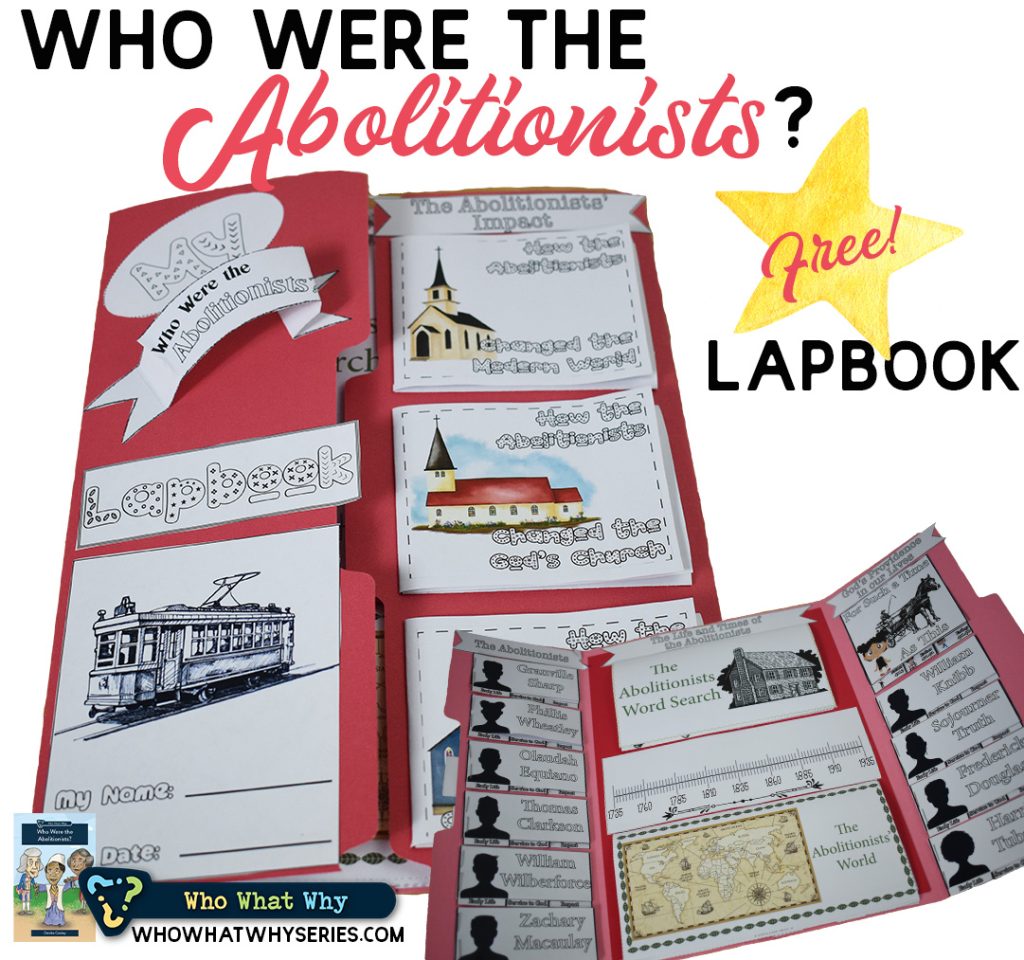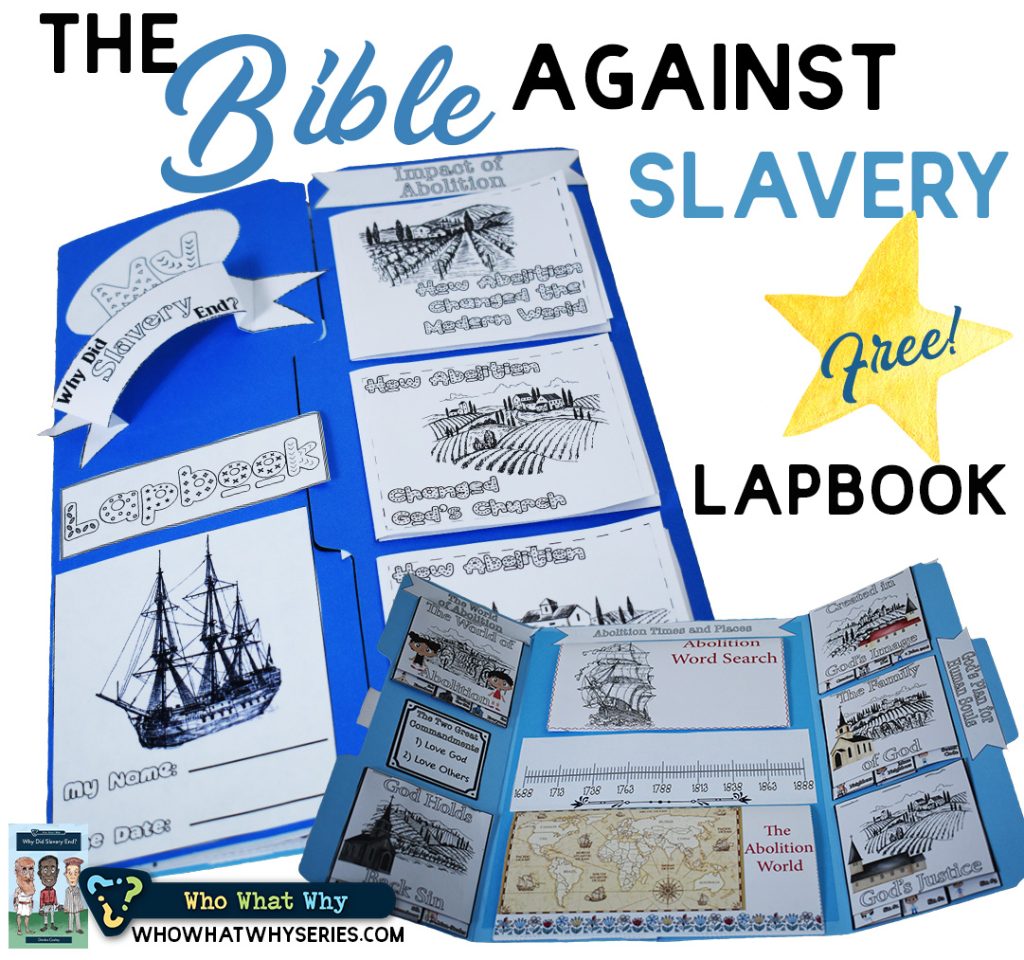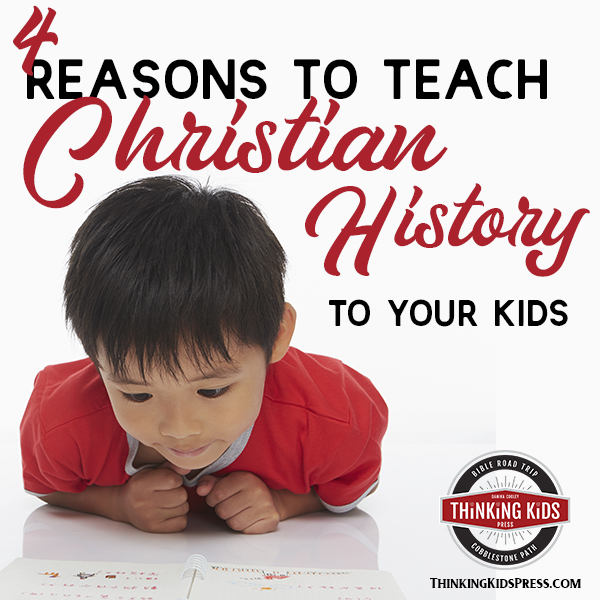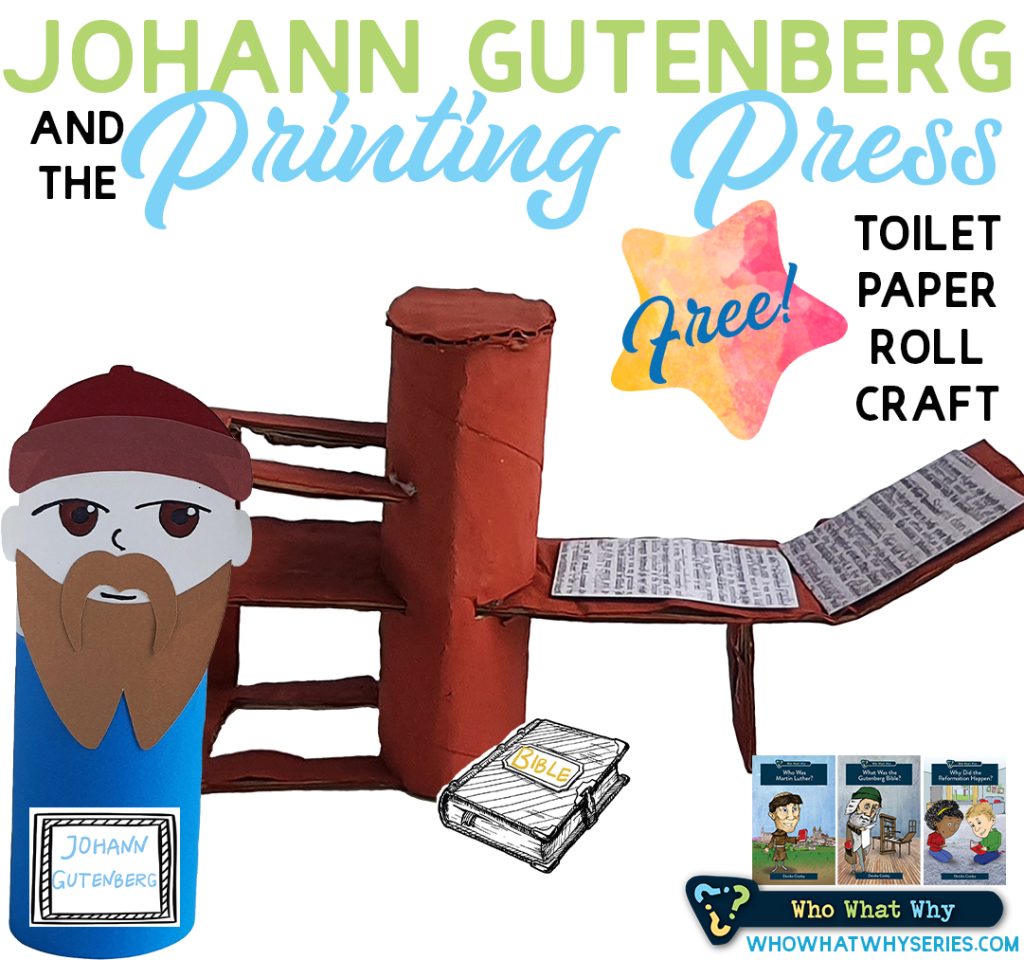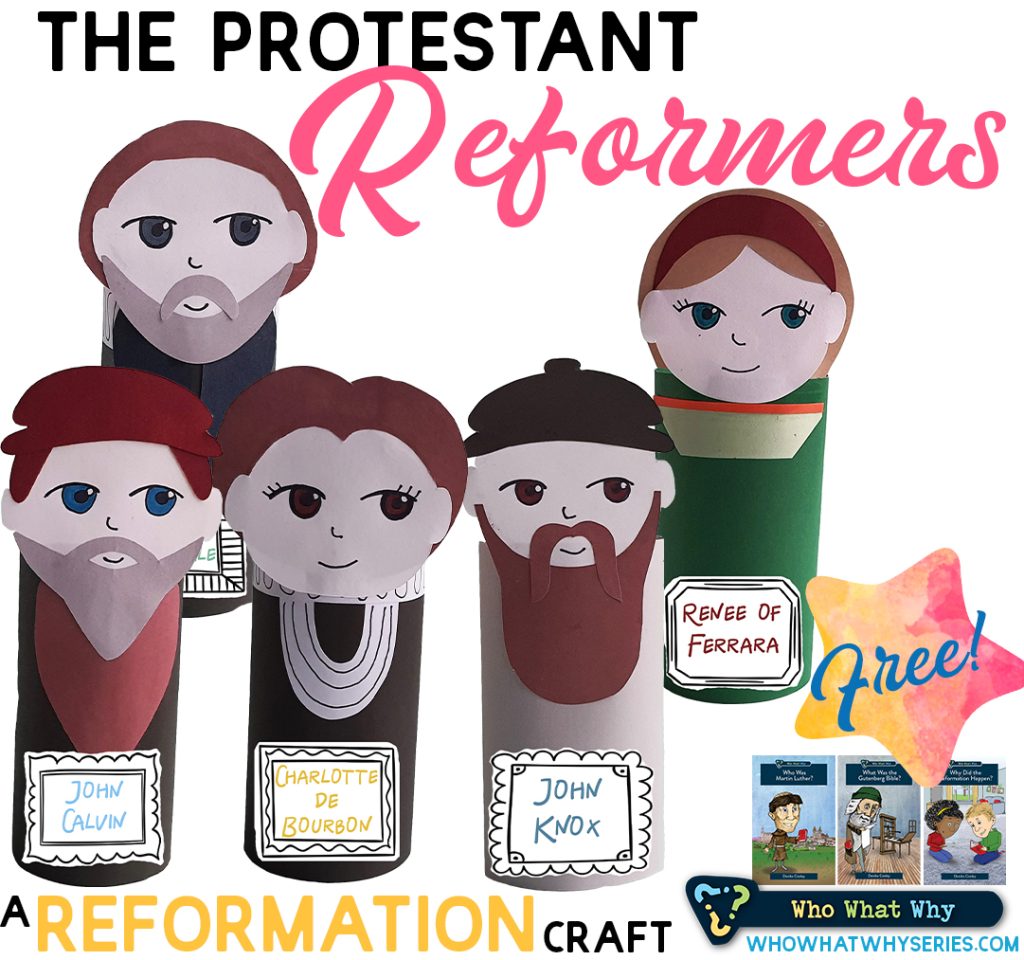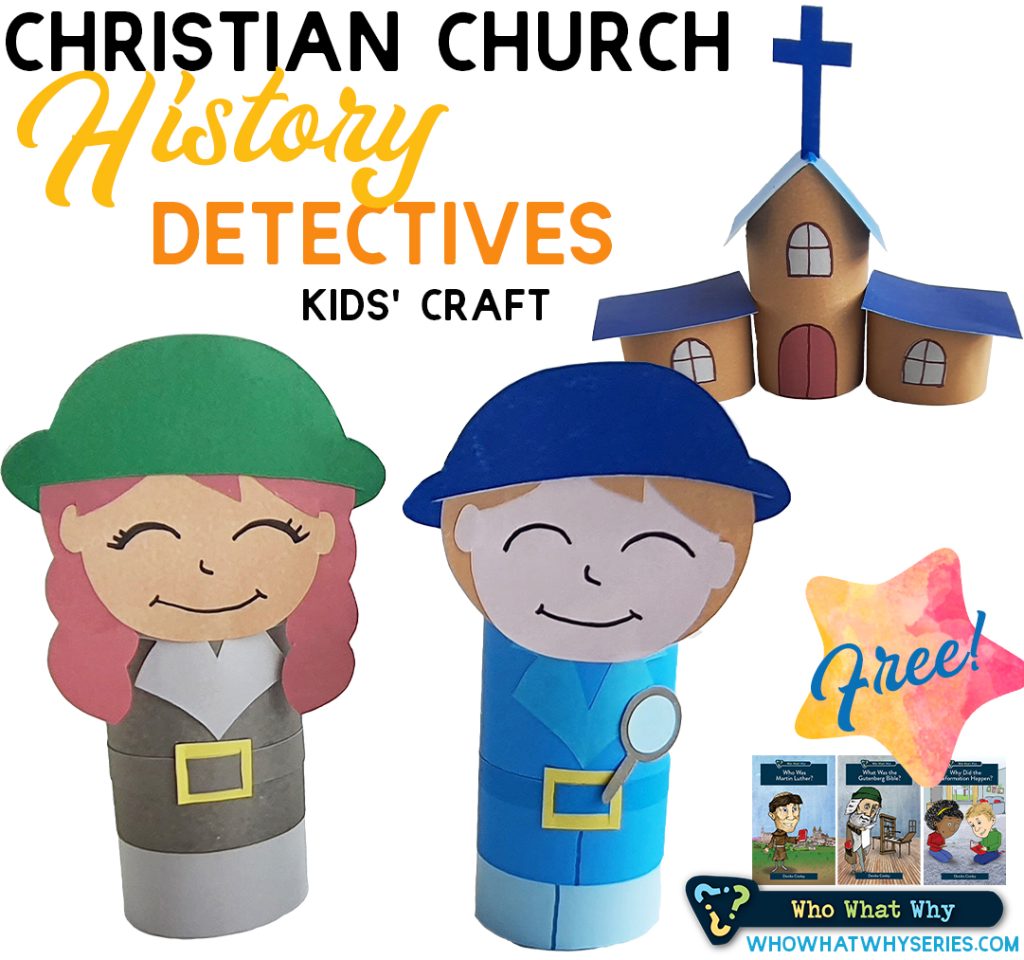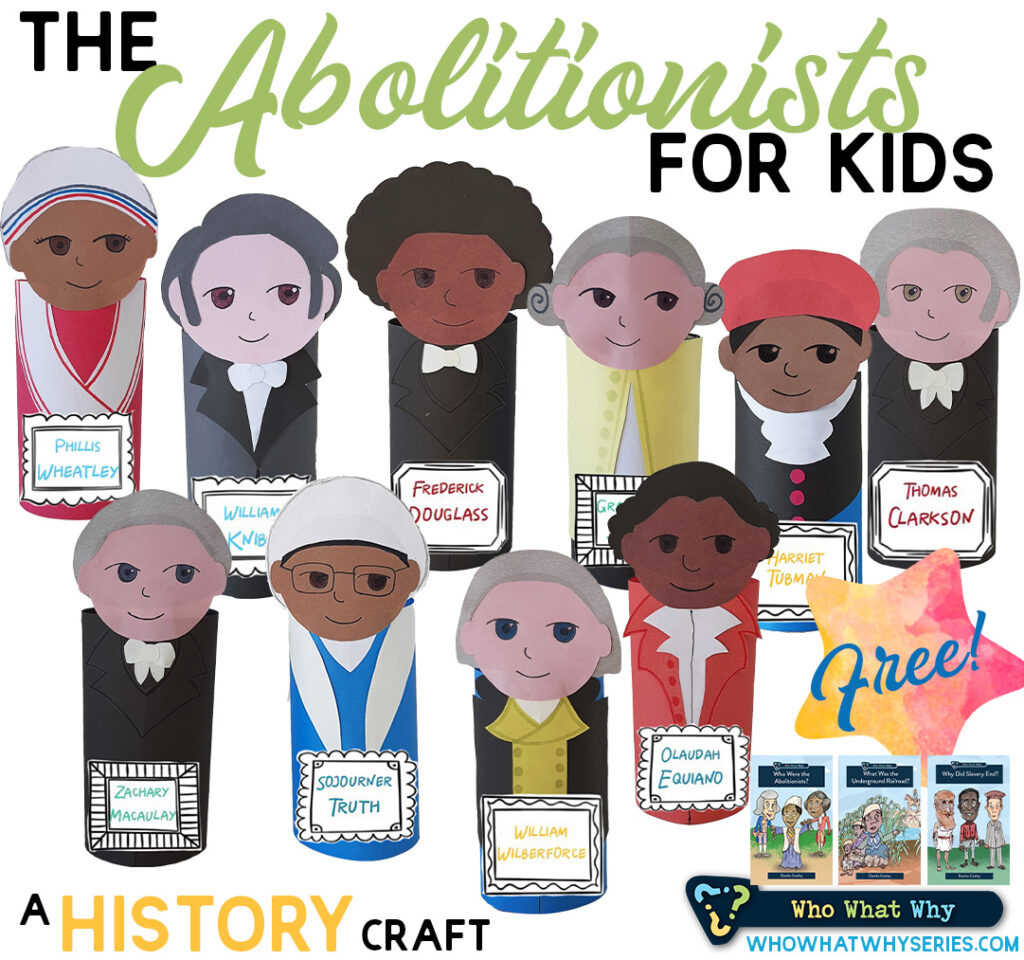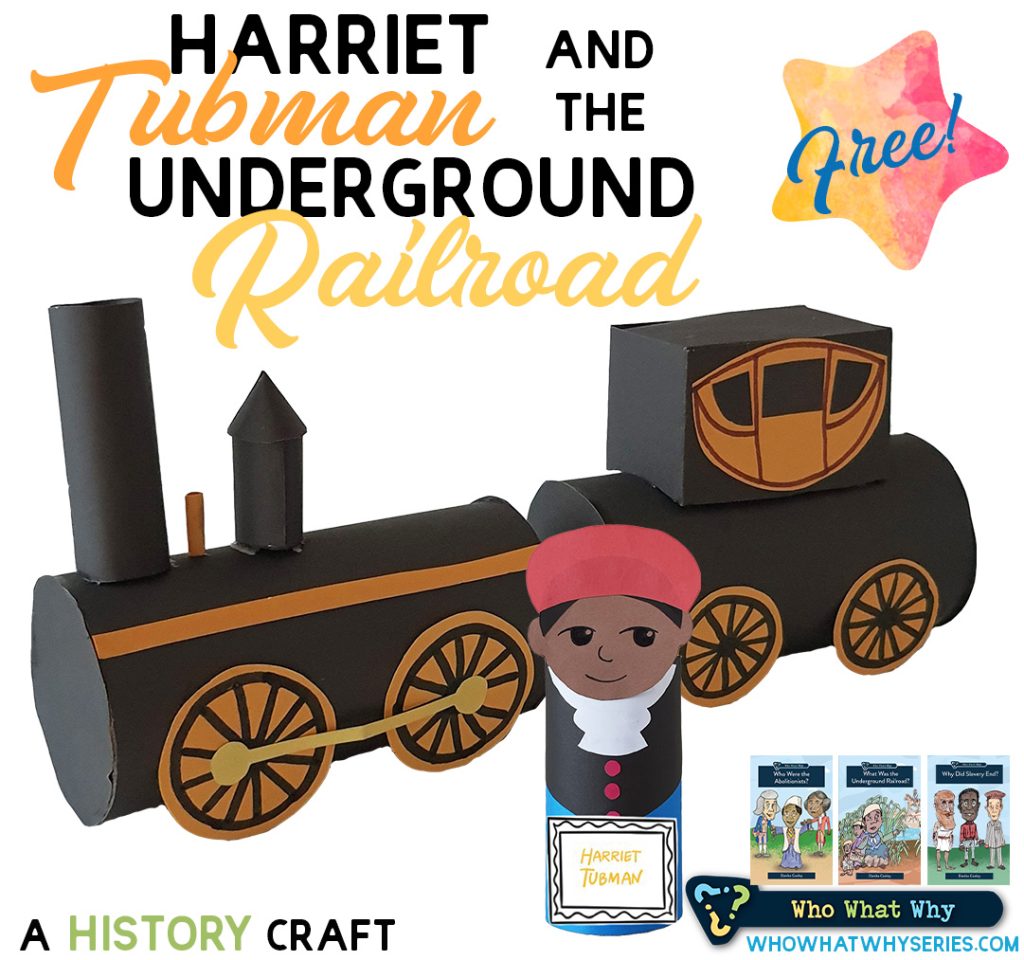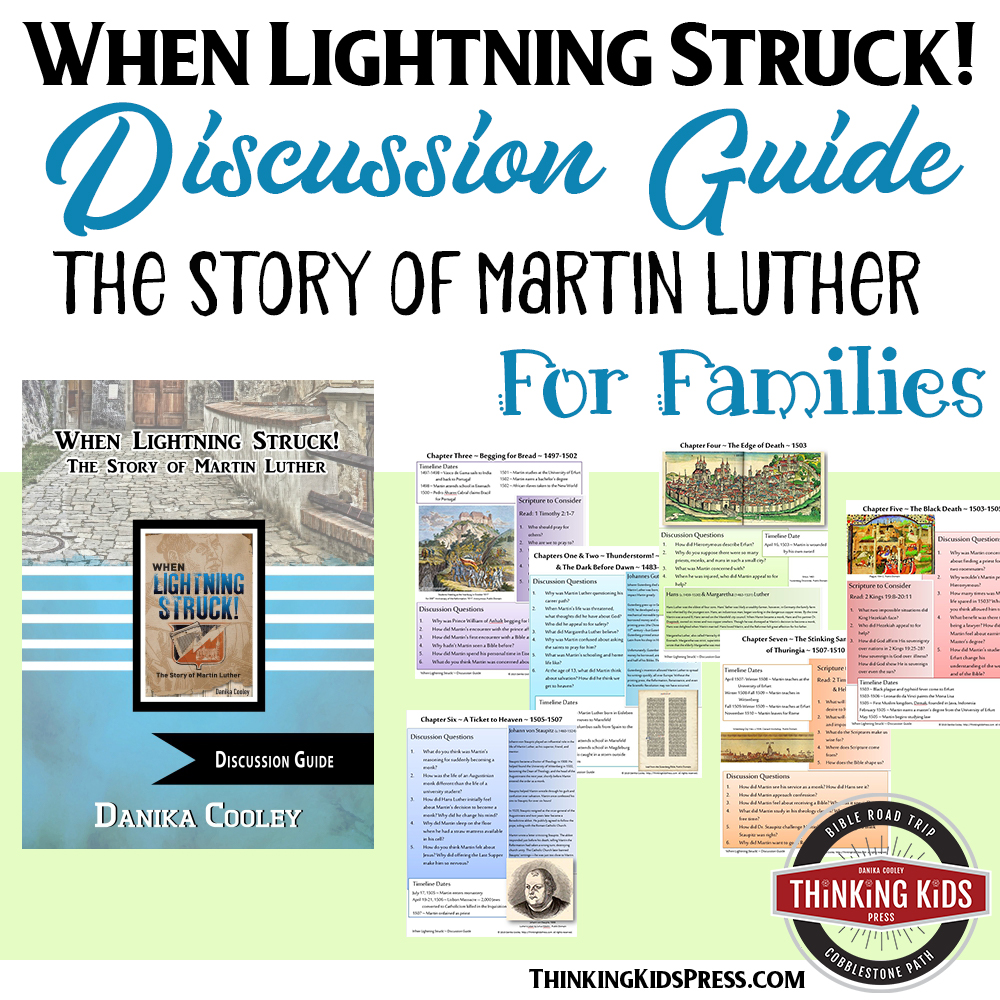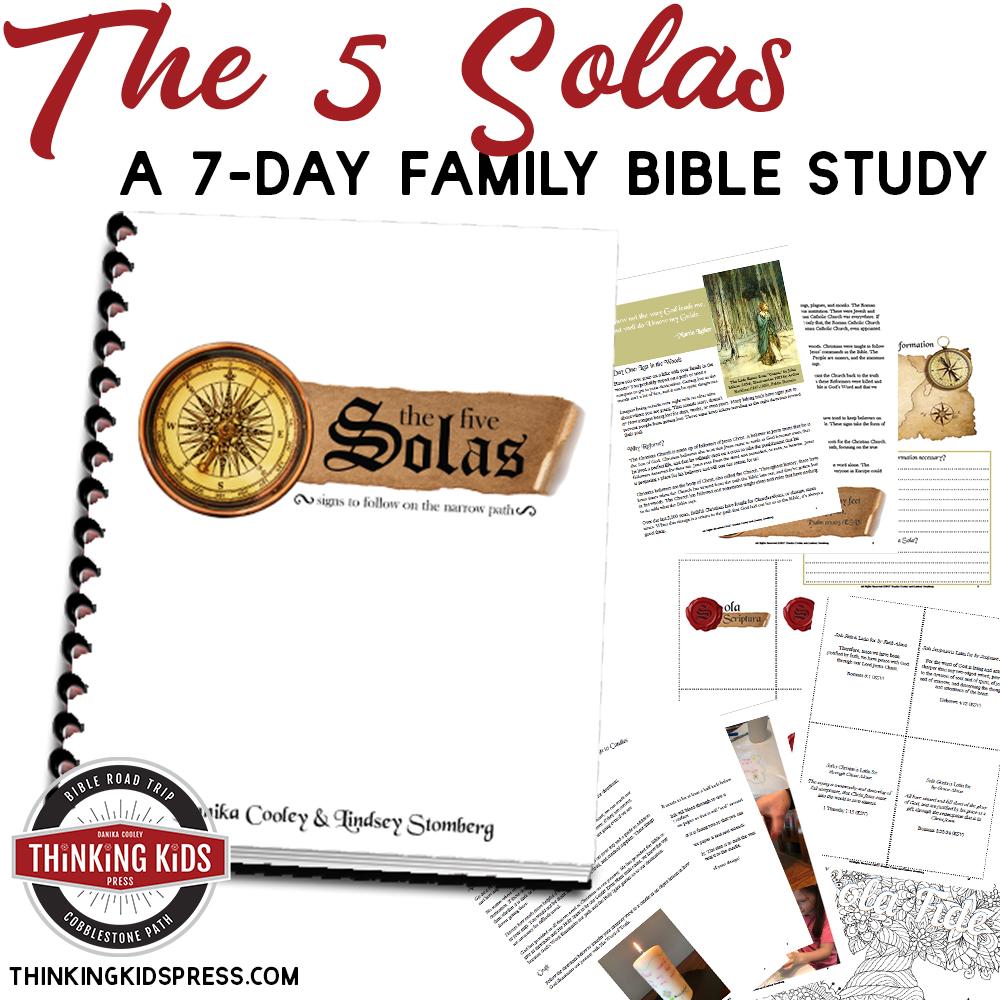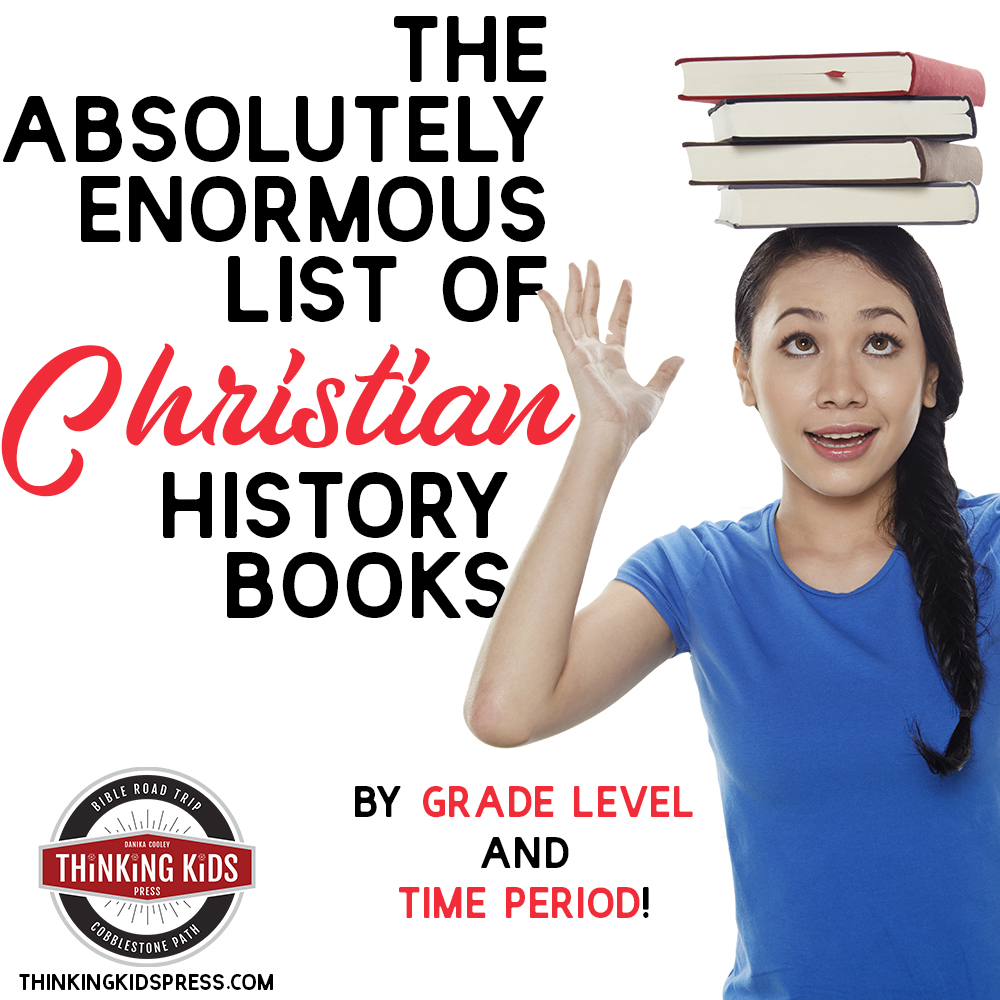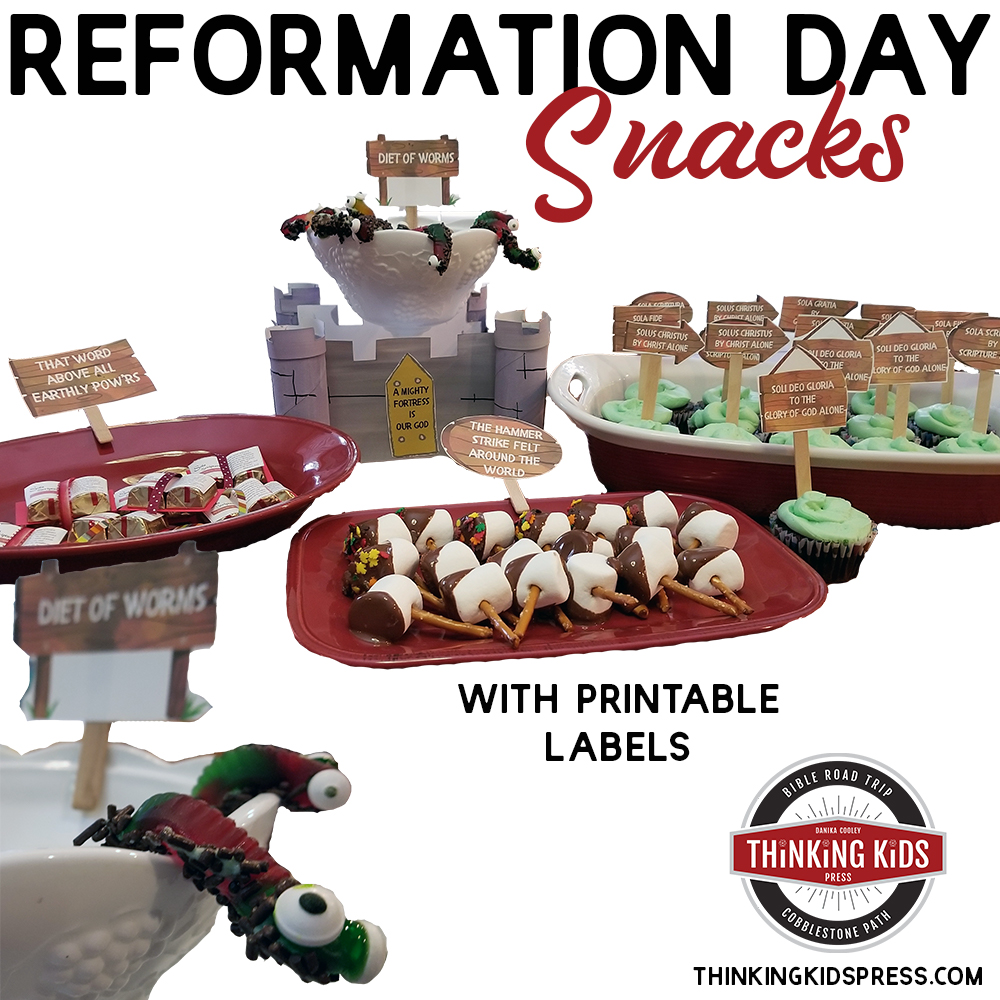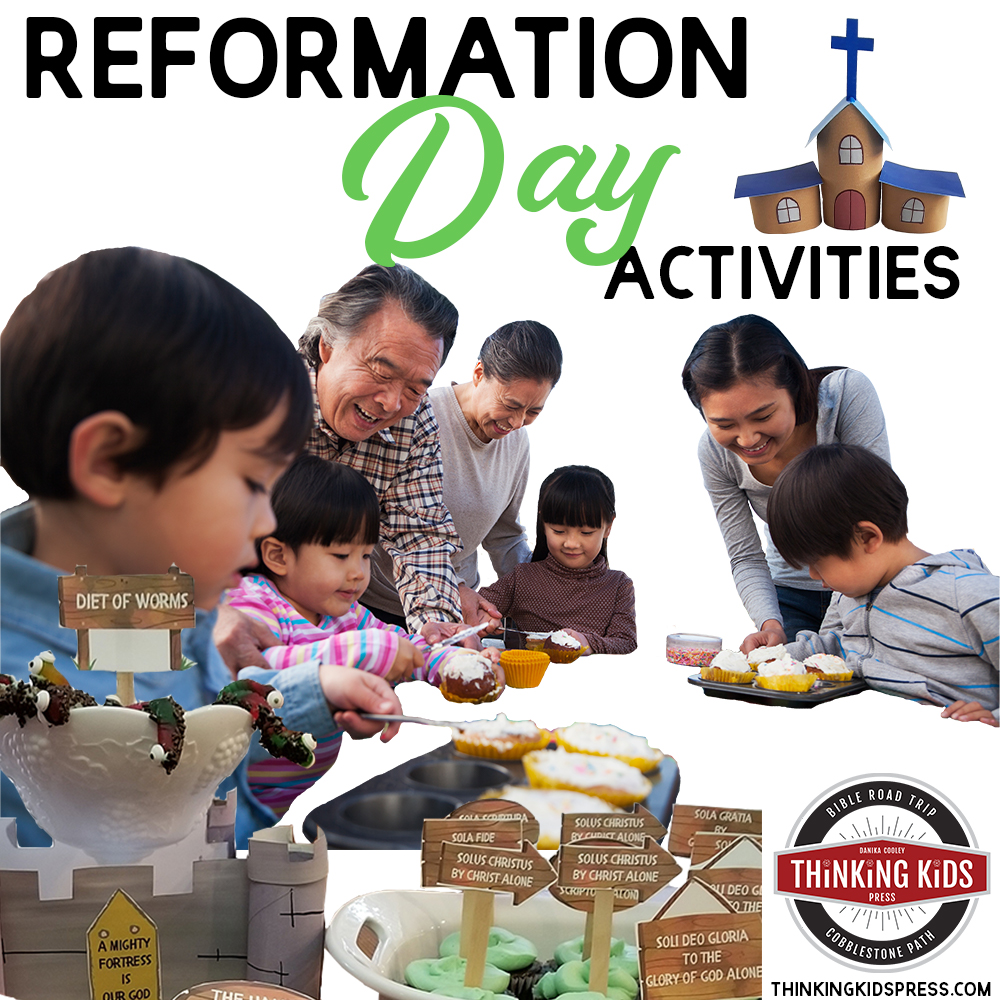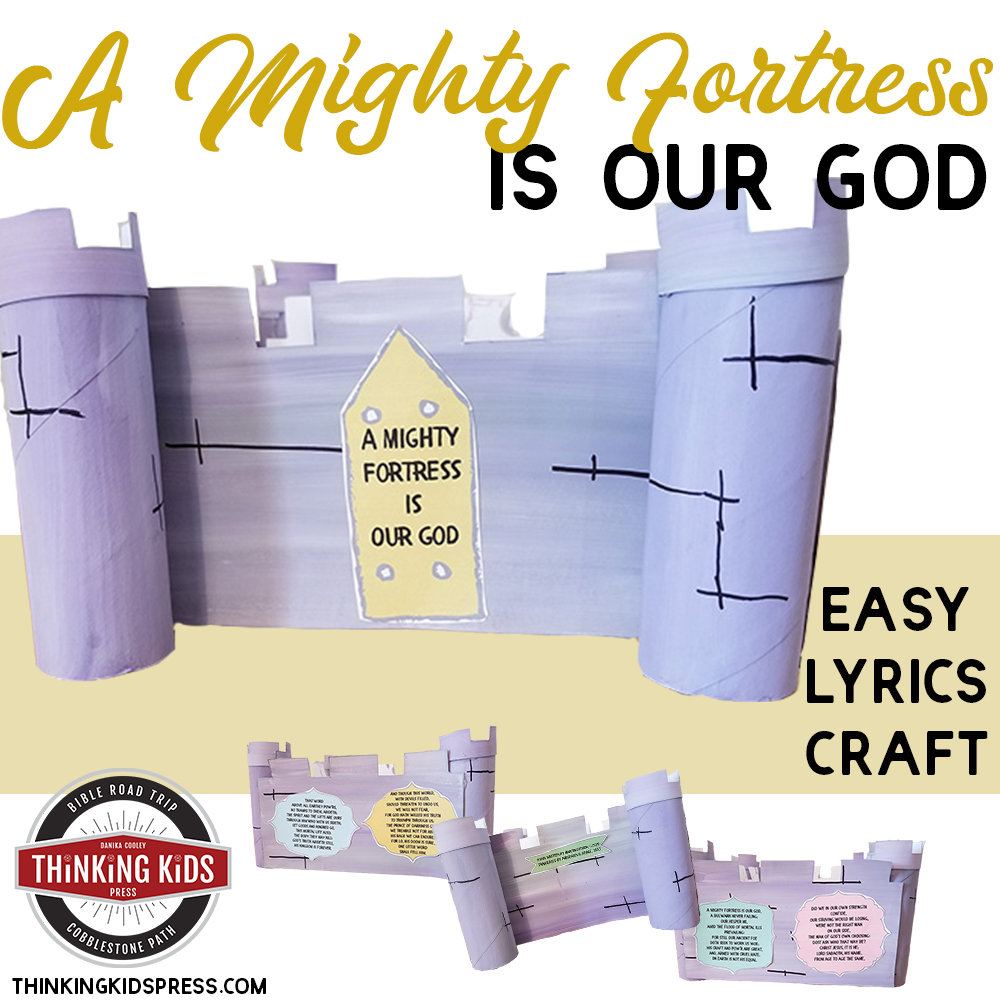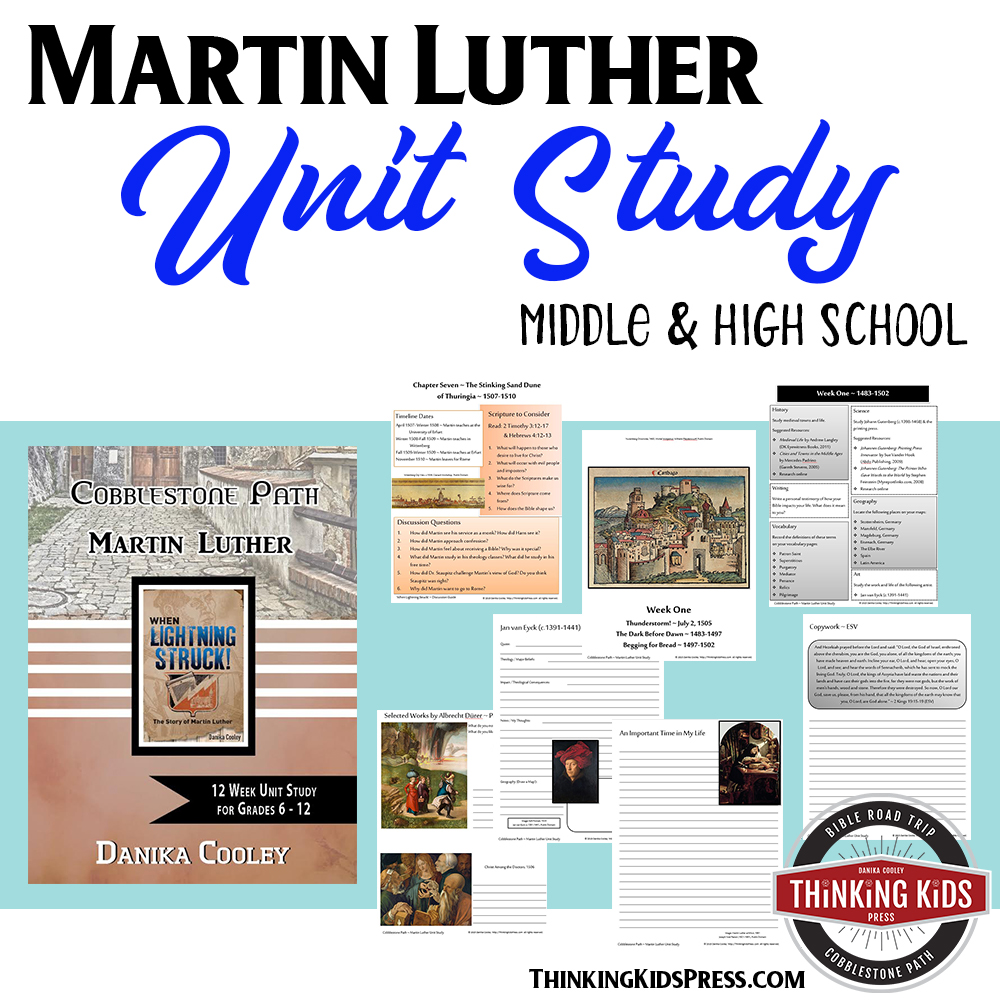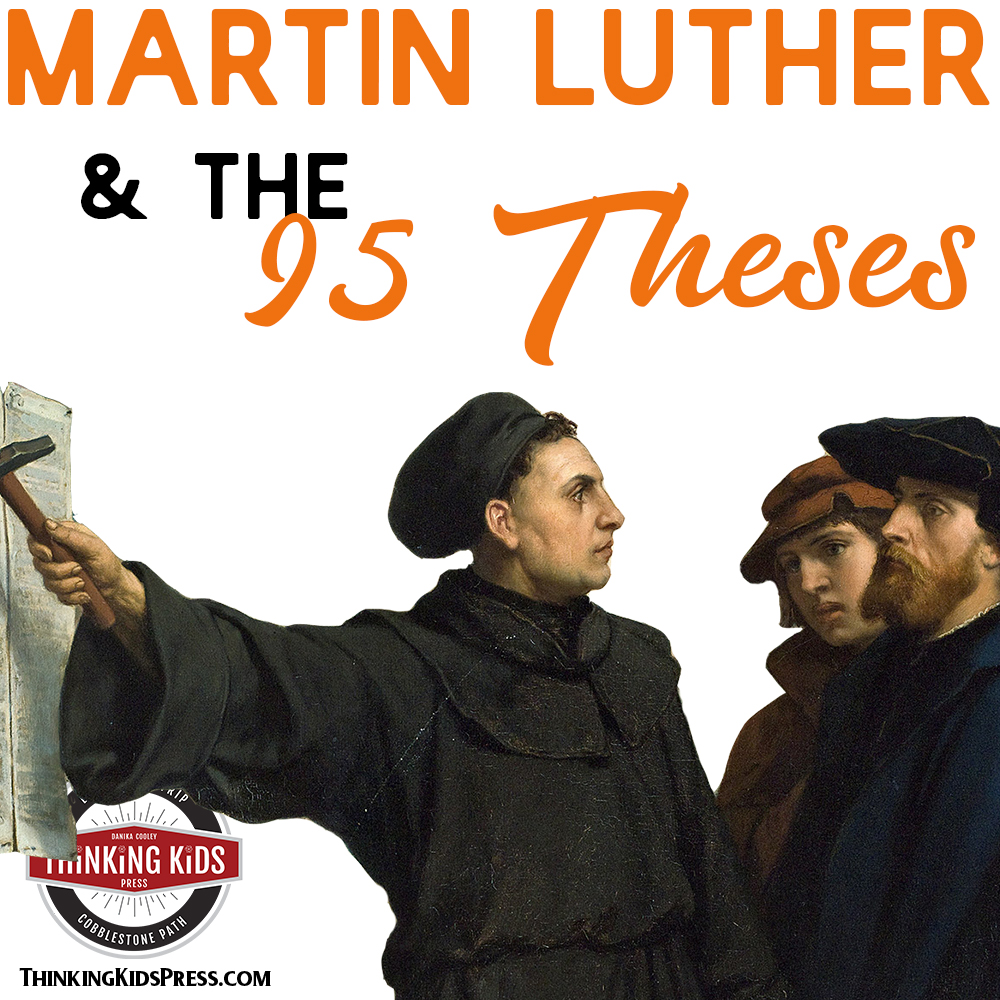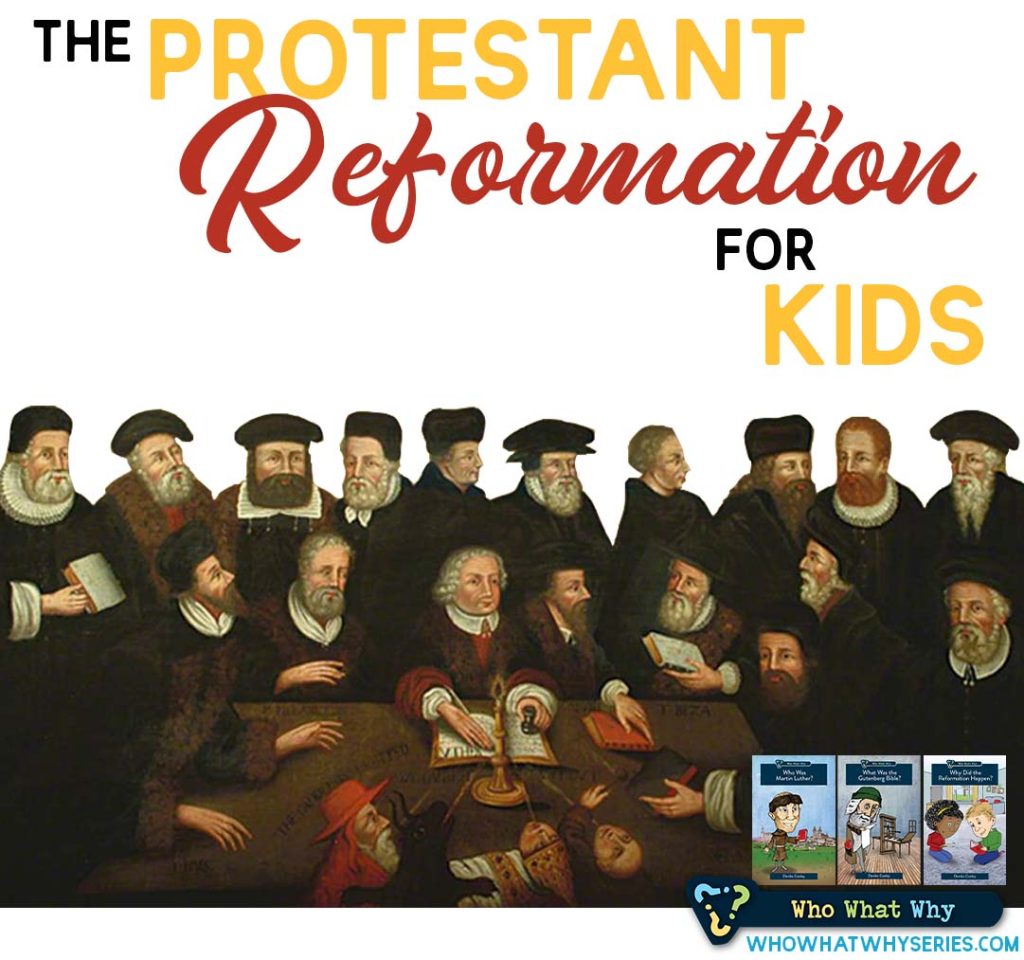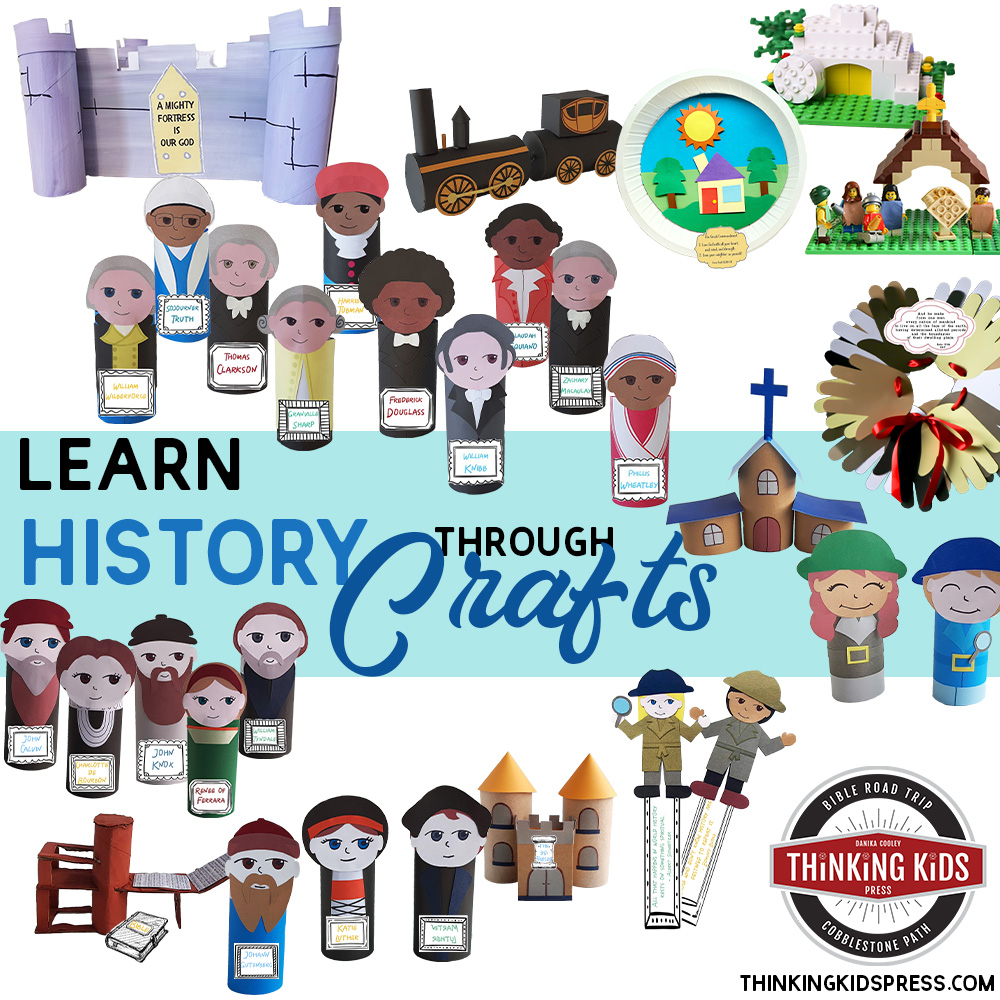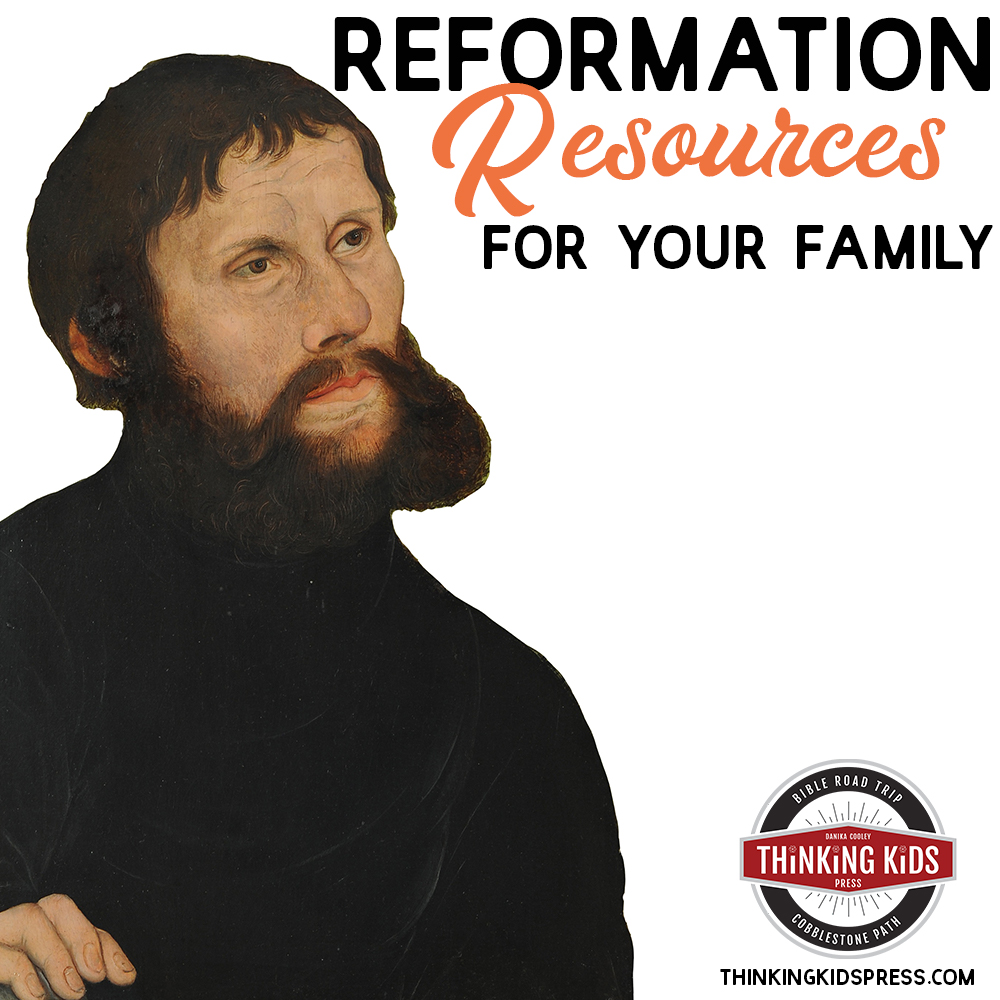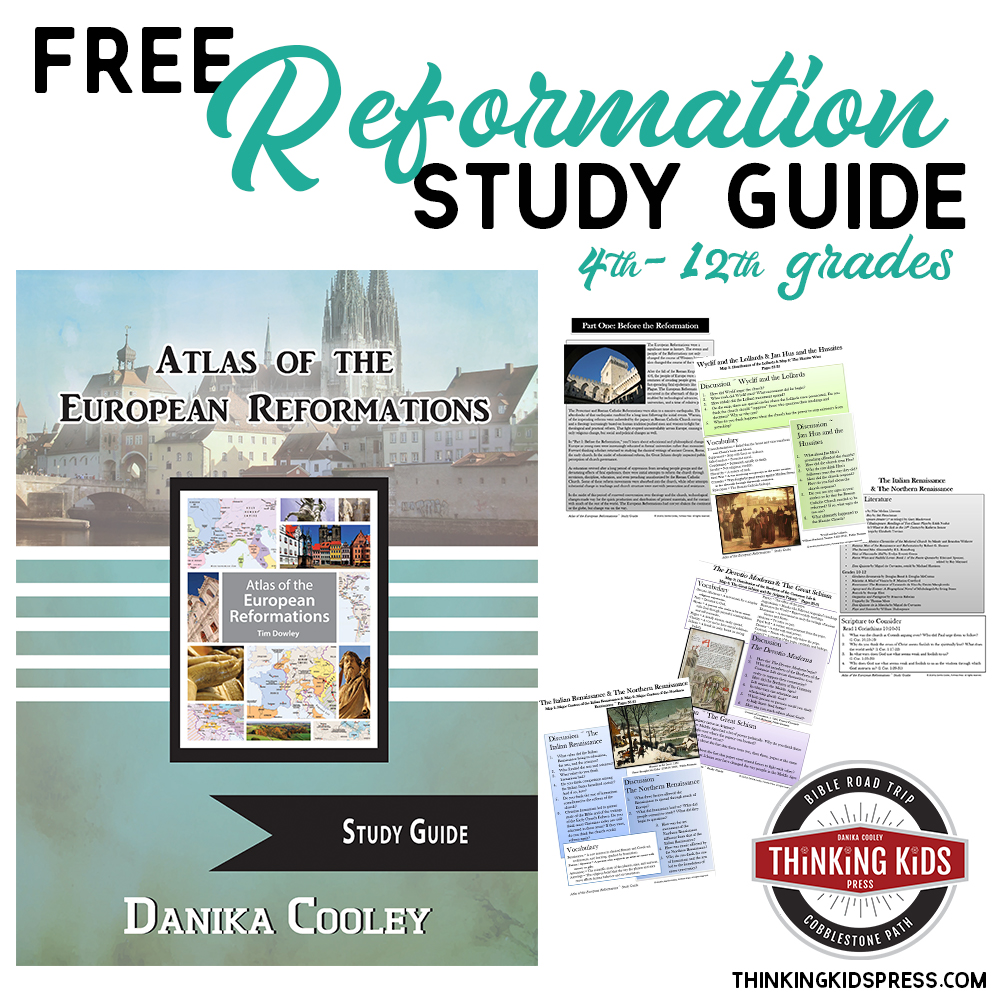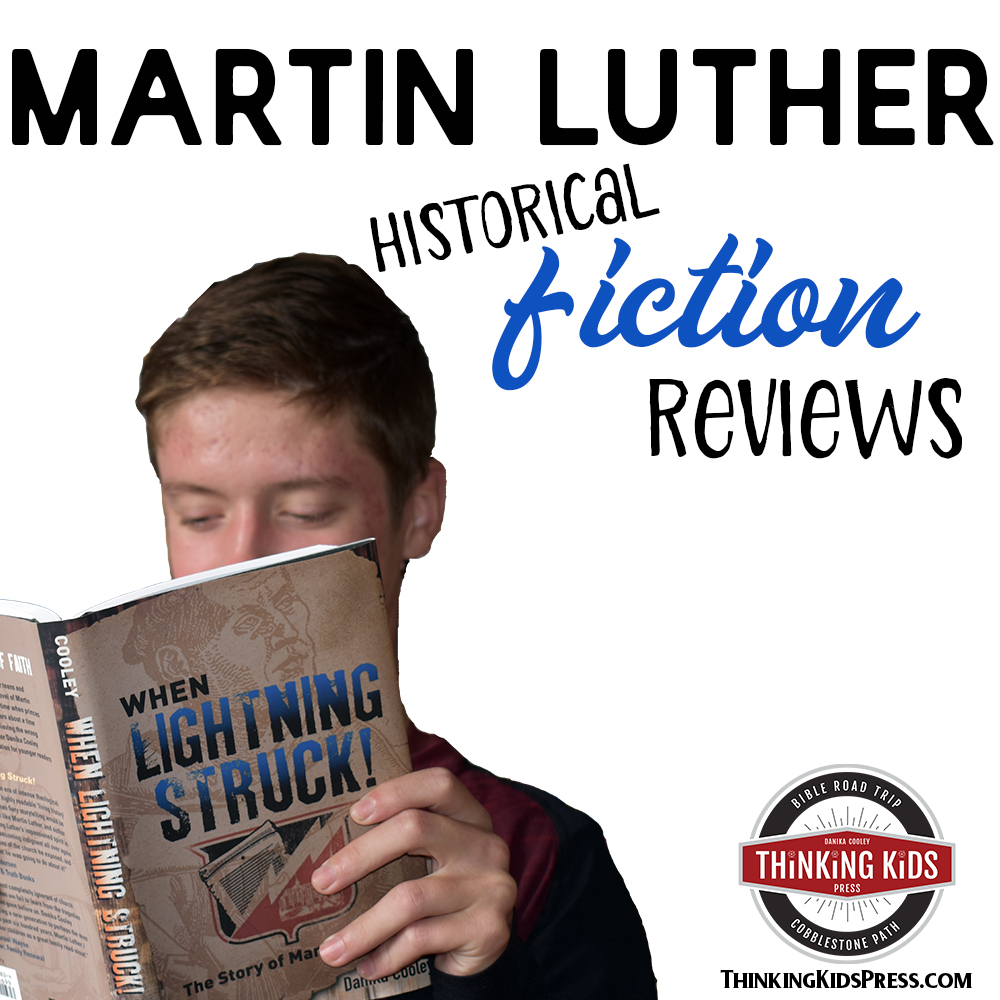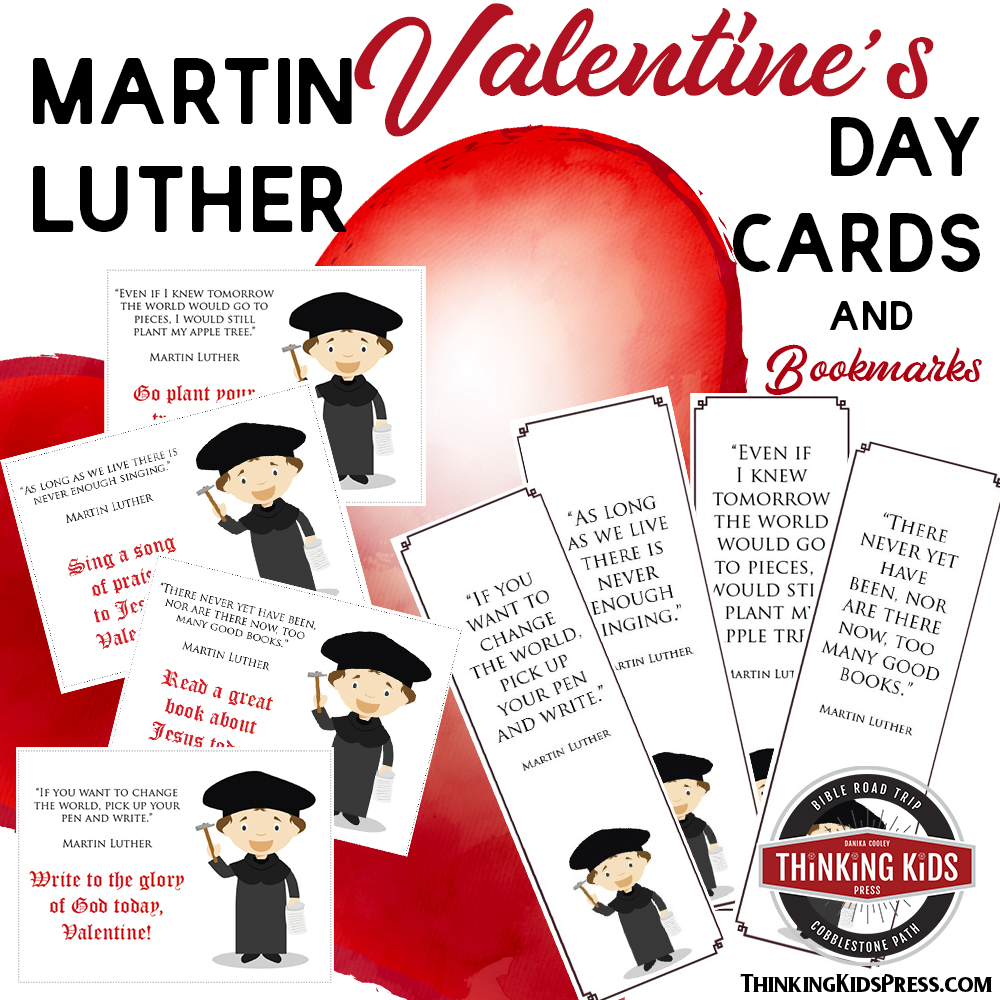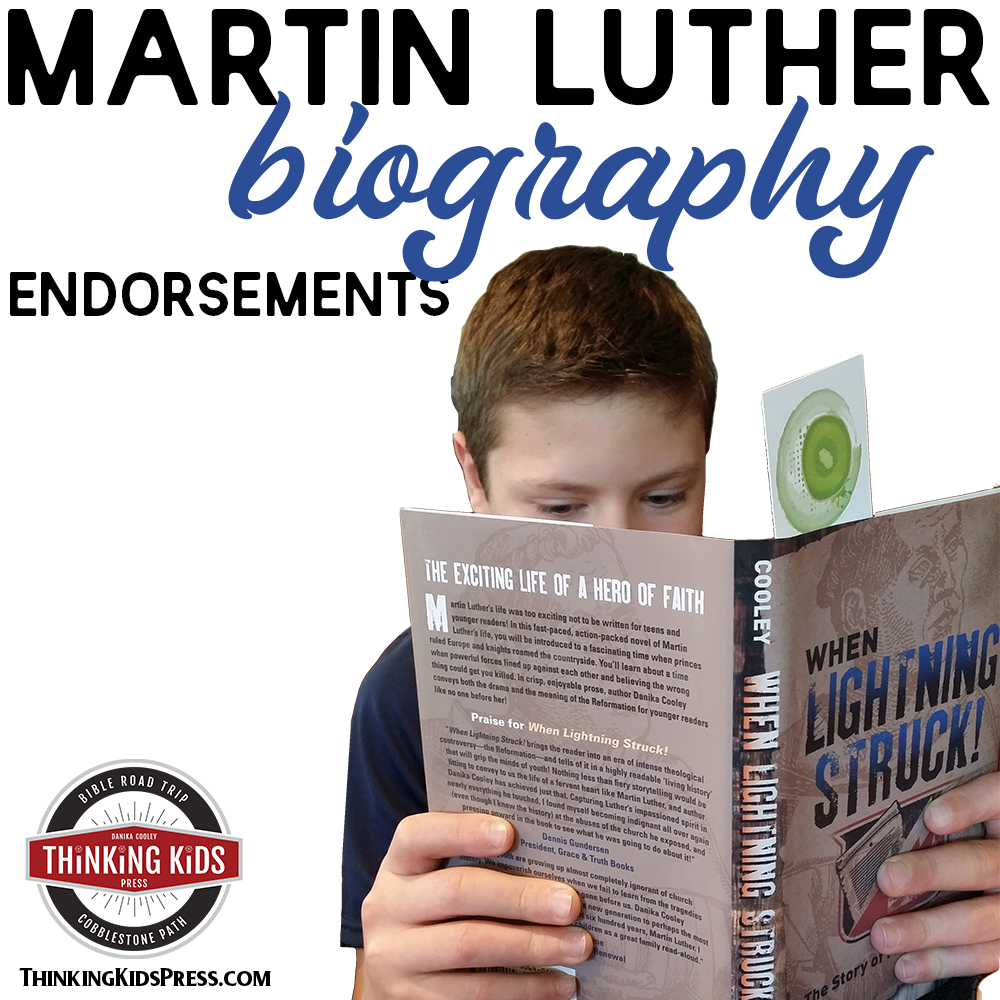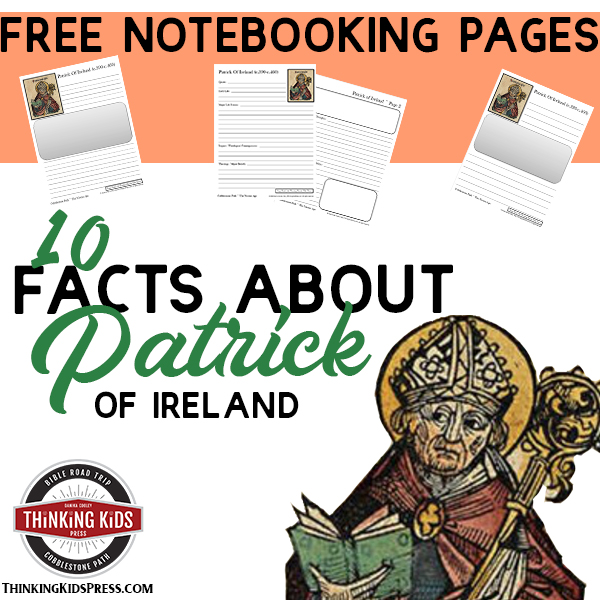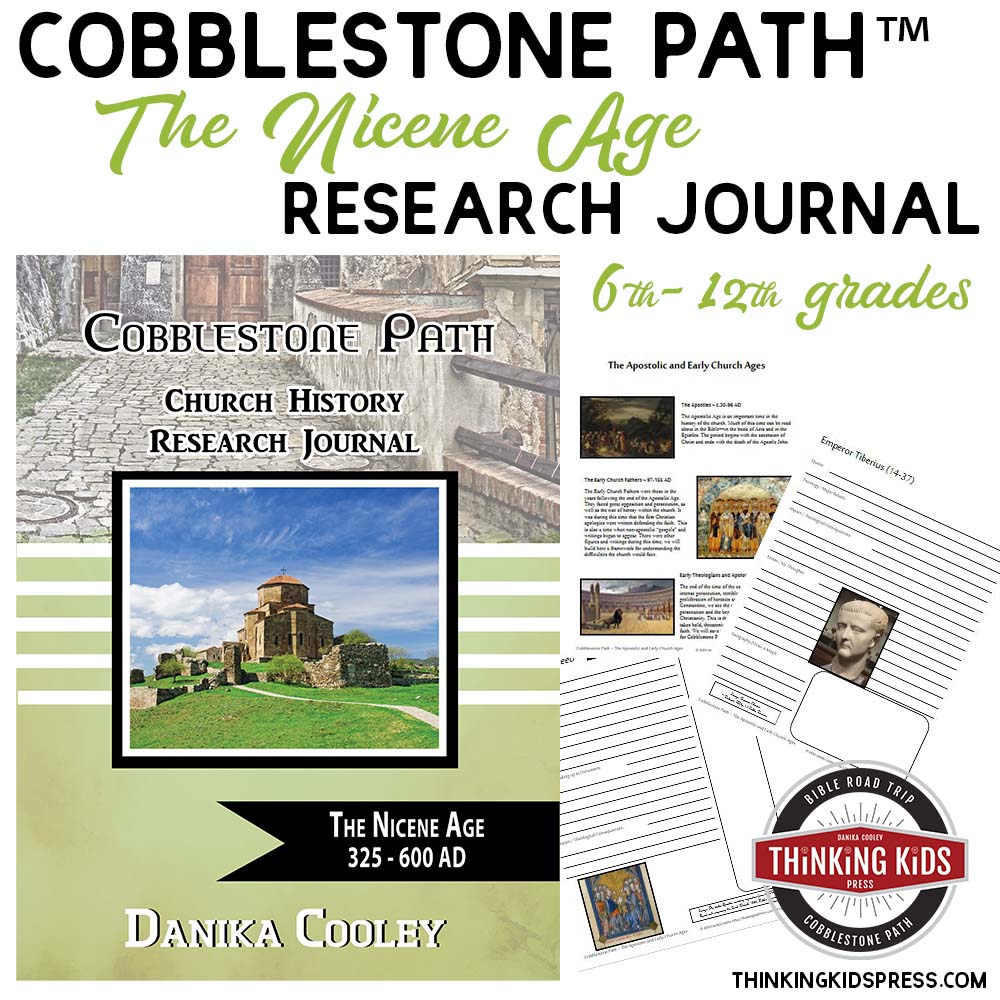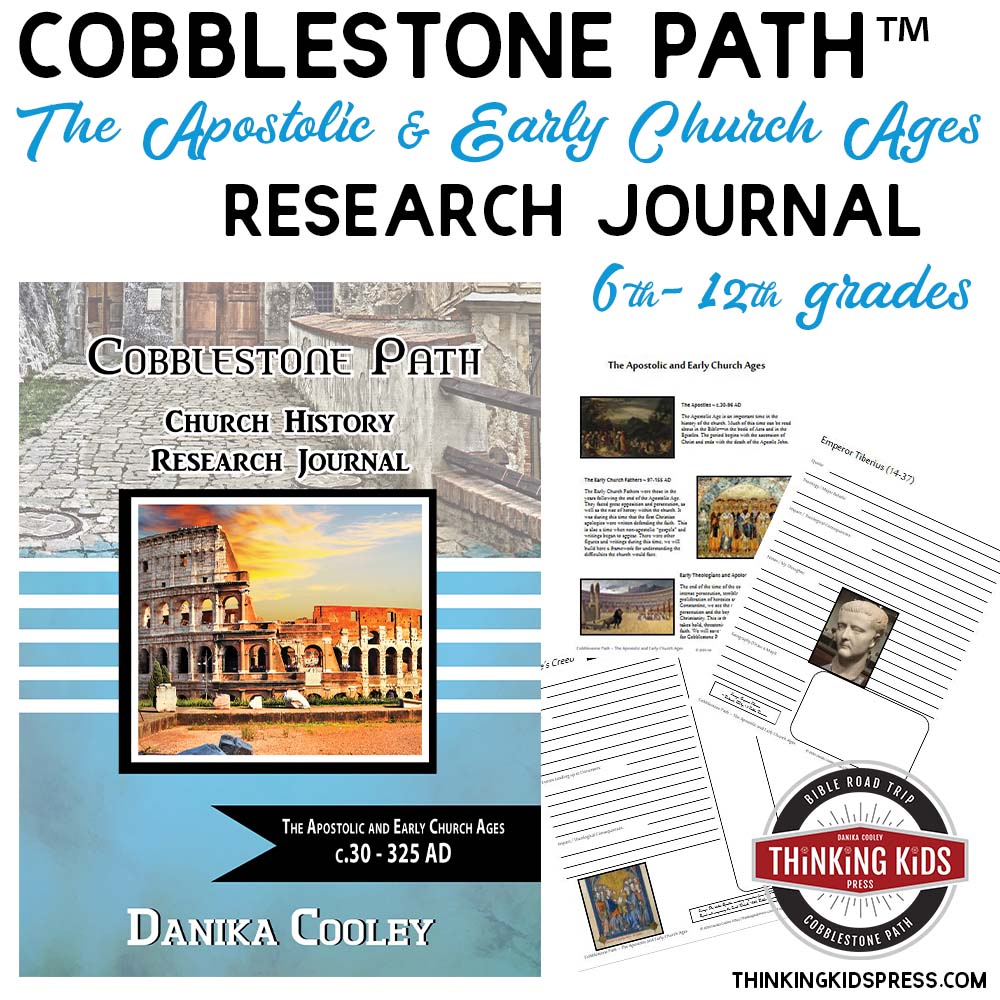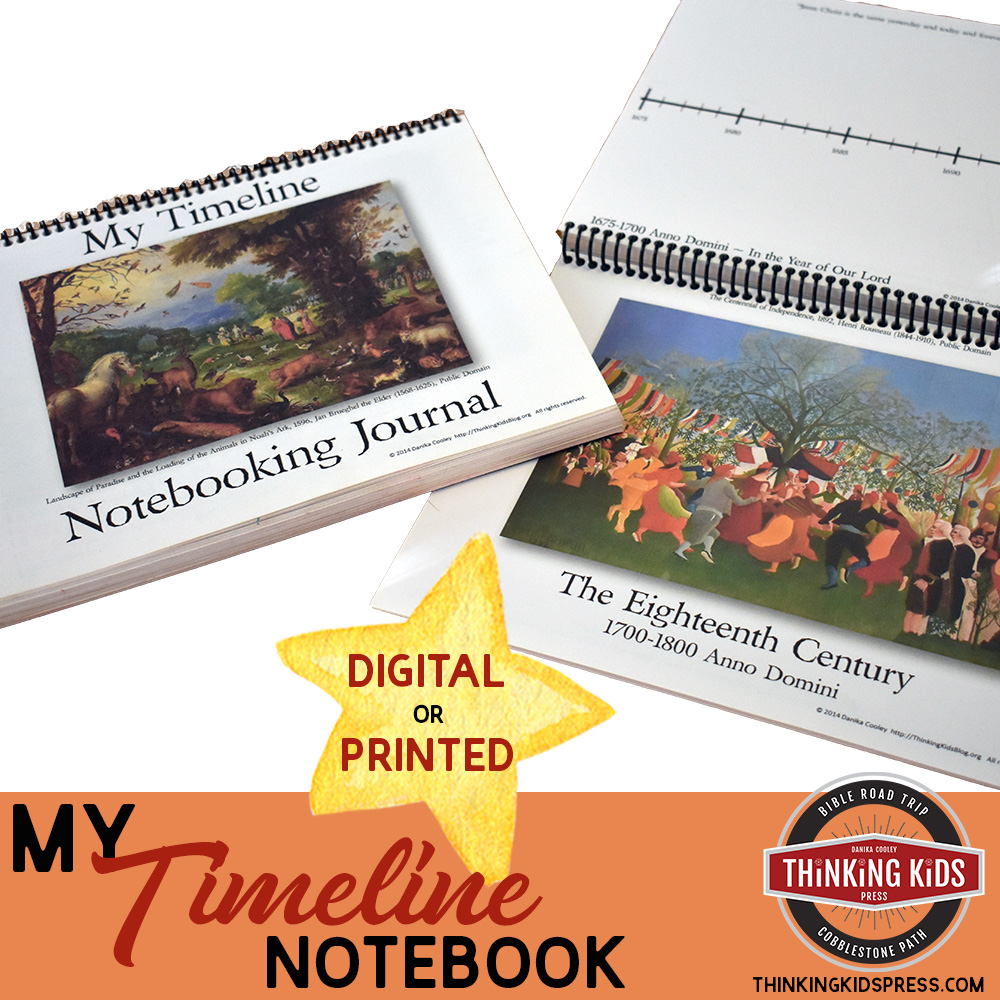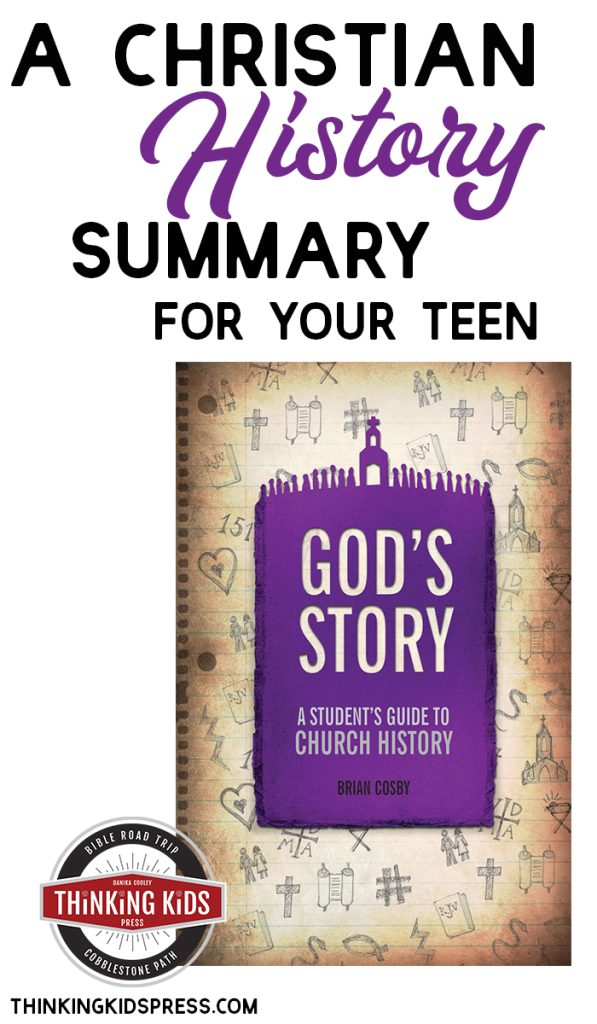
Christian History Summary
Brian Cosby’s new book God’s Story: A Student’s Guide to Church History (Christian Focus Publications, 2014) does a fabulous job of giving a church history summary from a theologically conservative, Protestant viewpoint. Mr. Cosby writes in a conversational narrative that’s not pretentious, but it’s also not condescending. His voice and tone are perfect for middle and high school students.
In 138 pages, Brian Cosby takes us through the important points of church history beginning in the Old Testament and ending with the challenges and blessings facing today’s Church. The chapters are short (10-12 pages) and are subtitled, providing nice stopping points if you’d like to use the book as a devotional in family worship. Each chapter ends with a few discussion questions meant to improve critical thinking about the information read.

Christian History
- In Why Study Church History?, Brian Cosby gives four reasons students can find relevance in the history of Christianity. I think it’s so important to give kids an objective before teaching them anything. They do so much better when they’re “on board” with what they’re learning (aren’t we all like that?). Mr. Cosby does a great job of drawing them in. My boys were overheard discussing this chapter (and giggling) the day they finished reading it. They must have enjoyed the chapter, because there are blueberry-stained fingerprints all over it.
- The Church and Its Old Testament Roots covers the difference between the invisible and visible church, talks about the Old Testament church and the promise of the coming Messiah. I love the fact that each chapter begins with a personal narrative that draws students in, then leads into history, carrying through the theme of the narrative.
- The New Testament Church and Apostolic Fathers (A.D. 1-100) covers the life of Jesus as told through the Gospels, his resurrection, and the subsequent spread of the gospel of Jesus Christ. Acts is covered, along with the martyrdom of the apostles, and there’s a section on the apostolic fathers. Mr. Cosby highlights in particular: Clement of Rome, Ignatius of Antioch, and Polycarp of Smyrna.
- Creeds, Councils and Christ (A.D. 100-500) explains the impact made by Constantine, Gnosticism, Arianism, and the early ecumenical councils, particularly the First Council of Nicaea, the First Council of Constantinople, and the Council of Chalcedon. I love that the text of the amended Nicene Creed is included. The chapter finishes with short section on Augustine of Hippo and Jerome.
- The Church in the Dark Ages (A.D. 500-1000) briefly explains the Dark Ages and why they deserve to be separated from a general discussion of the Middle Ages before highlighting the sack of Rome, the pope and papacy, and the rise of Islam. While this book is certainly written from a Protestant perspective, I think Mr. Cosby was very charitable in his discussion of the papacy. He explains why we don’t accept Matthew 16:18 (“On this rock I will build my church”) as an accurate interpretation to support the papacy and papal succession is not supported in Scripture. Yet, he describes the early papacy kindly, including many good points in the ministry of Gregory the Great. The turning point rests with Charlemagne. Islam is explained similarly – in a narrative format with some commentary, but certainly not in a dogmatic manner. I really appreciated that. I want our children to understand the theological differences, but I want them to learn those without venom.
- Divide and Conquer (A.D. 1000-1300) does a good job of covering some key (confusing!) issues. Mr. Cosby writes about the split between the church in the East and West, monks and monasteries, the Crusades (talk about tough subject matter!), transubstantiation (whoa), and scholasticism. Again, the stories are told from a clearly Protestant standpoint, but they don’t skirt the fault of those involved — even those claiming the name of Christ. In fact, one of the study questions is: “How would you respond to an atheist who says, ‘Well, your religion isn’t a religion of peace, just look at what you Christians did during the Crusades!’?” <– See what I mean? Critical thinking questions are so important at this age!
- The Road to Reformation (A.D. 1300-1500) first discusses a number of issues that led to the unrest which contributed to the Reformation occurring at the time it did. Famine, the Black Death, superstitions, mysticism, spiritual and physical abuses of the Roman Catholic Church, moral corruption in the clergy, and indulgences all created a powder keg. Mr. Cosby briefly highlights a number of Reformers and scholars in this chapter including John Wycliffe, John Huss (or Jan Hus), Lorenzo Valla, Erasmus, Martin Luther and John Calvin.
- In The Continental Reformation (A.D. 1500-1600), there is a more in-depth analysis of the contributions of Luther and Calvin, along with a brief explanation of the five “Solas” (common to most modern Protestant churches) and also “TULIP” or the Five Points of Calvinism. Even if a student’s family isn’t Reformed, it’s important to understand that these exist. Mr. Cosby also briefly highlights the Council of Trent, and a few of Radical Reformation churches such as the Anabaptists.
- The English Reformation and the Puritans (A.D. 1500-1700) covers the unique path taken in England with Henry VIII forming the Church of England, and the (sometimes bloody) legacy of his heirs. Elizabethan rule, the Puritans, and the King James Bible are all explained before the Scottish Reformation is explored. There is a brief biography of John Knox, an explanation of Charles I’s war with his own Parliament, and the Westminster Confession of Faith. Mr. Cosby also explains the Great Persecution under Charles II and William and Mary.
- With three chapters remaining in God’s Story, we move into more recent history. Your students will begin to recognize the effects of these chapters in their own lives. Enlightenment and Awakening (A.D. 1700-1800) explores the move of Separatists to the United States and the rejection of institutional religion amongst a number of people in Europe. Mr. Cosby covers the Enlightenment and the rise of Deism, championed by Isaac Newton. He also explains Pietism and the efforts of Count Nicolaus Zinzendorf and the Moravian Brethren. Students will read about John Wesley and the Methodists, and The Great Awakening led by George Whitefield and Jonathan Edwards. He also covers David Brainerd and his missions work among the Native Americans as well as the work done by John Eliot.
- Abandoning the Bible (A.D. 1800-1900) covers four departures from historical, Scriptural, orthodox Christian faith. The section on Revivalism covers the Second Great Awakening, Postmillennialism, revivalism as let by Charles Finney (and some of his departures from orthodoxy), the invention of Sunday School, abolitionism, and Dispensationalism. The section on Liberalism covers the Civil War, the rise of liberal theology and the rejection of the supernatural, the emphasis of “feeling” in religion, and the subsequent decrease of attendance in liberal churches (70%!) as they began to look just like the world. In the section on cults, students will learn of the invention of Mormonism and Jehovah’s Witnesses. Lastly, they will read of Evolution; the theory is explained along with the impact. The end of the chapter highlights a few preachers who stood in opposition to the hijacking of the true gospel.
- The last section in God’s Story is Fundamentalism, Evangelicalism, and Global Christianity (A.D. 1900-Present). This section covers Fundamentalism and its emphasis on the non-negotiable pillars of the Christian faith as well as the Scopes “Monkey” Trial, Neo-orthodoxy and the emphasis on God’s true nature, Pentacostalism and its many branches as well as the tendency toward emphasis on personal power, and Evangelicalism along with the rise of youth culture zeal and efforts to restore a theologically conservative Christianity.

Christian History Book Your Teens Will Love
God’s Story: A Student’s Guide to History is a brief, theologically conservative look at the history of the Christian Church for middle school and high school students. Brian Cosby, a minister in the Presbyterian Church of America, is interesting, relative, and charitable in his historical overview. Church history is important. It helps us identify trends, movements and departures from the historic Christian faith. I highly recommend this book for your family.
I’d like to thank Christian Focus Publications for providing me with a copy of God’s Story: A Student’s Guide to Church History by Brian Cosby in return for my honest review.
Purchase God’s Story: A Student’s Guide to Church History:
God’s Story: A Student’s Guide to Church History
Amazon: God’s Story: A Student’s Guide to Church History
Christian Book: God’s Story: A Student’s Guide to Church History
Christian Books Teens Will Love
Rebels Rescued (A Students Guide) God’s Story: A Student’s Guide to Church History
God’s Story: A Student’s Guide to Church History Water the Earth: A Student’s Guide to Missions
Water the Earth: A Student’s Guide to Missions
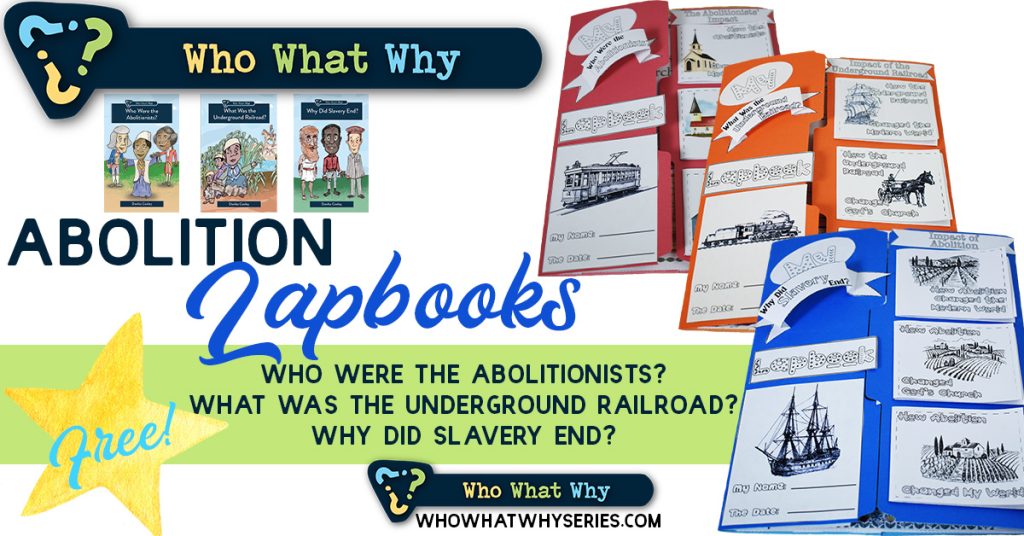
Learn more about the Who What Why series and get your FREE Abolition Lapbooks here.
Bible Resources for Your Kids
Learn More HereLearn More HereLearn More HereLearn More HereLearn More HereLearn More Here
Martin Luther and the Reformation
Teach your teens about Martin Luther and the Reformation in an exciting, new way with When Lightning Struck!: The Story of Martin Luther! The book also makes a wonderful family read-aloud.
Martin Luther (1483-1546) is often referred to as “The Father of the Reformation”. Born during a time of superstition, tradition, and spiritual corruption, Luther gave up a lucrative career as a lawyer to become a monk in the Roman Catholic Church–a path he felt would certainly lead to salvation.
As Luther’s understanding of the spiritual corruption within the Church grew, and he despaired of true salvation, Luther (now a scholar and priest) sought the Bible for answers. Following his discovery of the true gospel in Scripture, Luther began to preach spiritual freedom to his congregation, and to teach biblical (rather than philosophical) theology at the University of Wittenberg.
It was on October 31, 1517 that Martin Luther penned his Ninety-Five Theses in Latin in response to the abusive indulgence sales practices of the monk Johann Tetzel in a nearby town. Luther nailed the Theses to the door of the Wittenberg Castle Church, the scholarly bulletin board of his day, and mailed a copy to the Archbishop of Mainz. Luther hoped to start a scholarly debate about the practice of selling salvation through plenary indulgences. The response he received was greater–and more dangerous–than he imagined it would be.
Luther’s story is exciting. There are death defying moments, epic spiritual battles, narrow escapes, a kidnapping, revolution, and war. As the “Father of the Reformation”, Luther is a vital figure in Church history. His sacrifice and willingness to wage battle against the spiritual, religious, and political powers of his medieval world allowed Christians throughout time to embrace the truth of salvation by grace alone through faith alone in Christ alone as explained by Scripture alone once again. May all glory be to God alone!
Read portions of the first eight chapters of When Lightning Struck!:
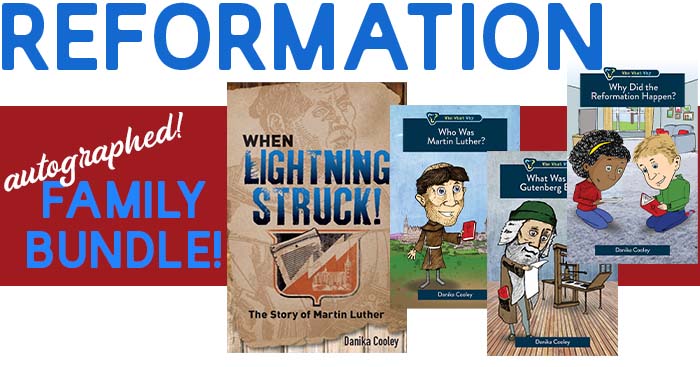
Grab the autographed Reformation Family Bundle!
More Thinking Kids Posts You’ll Love!

Join the newsletter

Get the Family Prayer Box Project FREE!
Teach your children to pray with this fun project that includes 7 printable sets!




